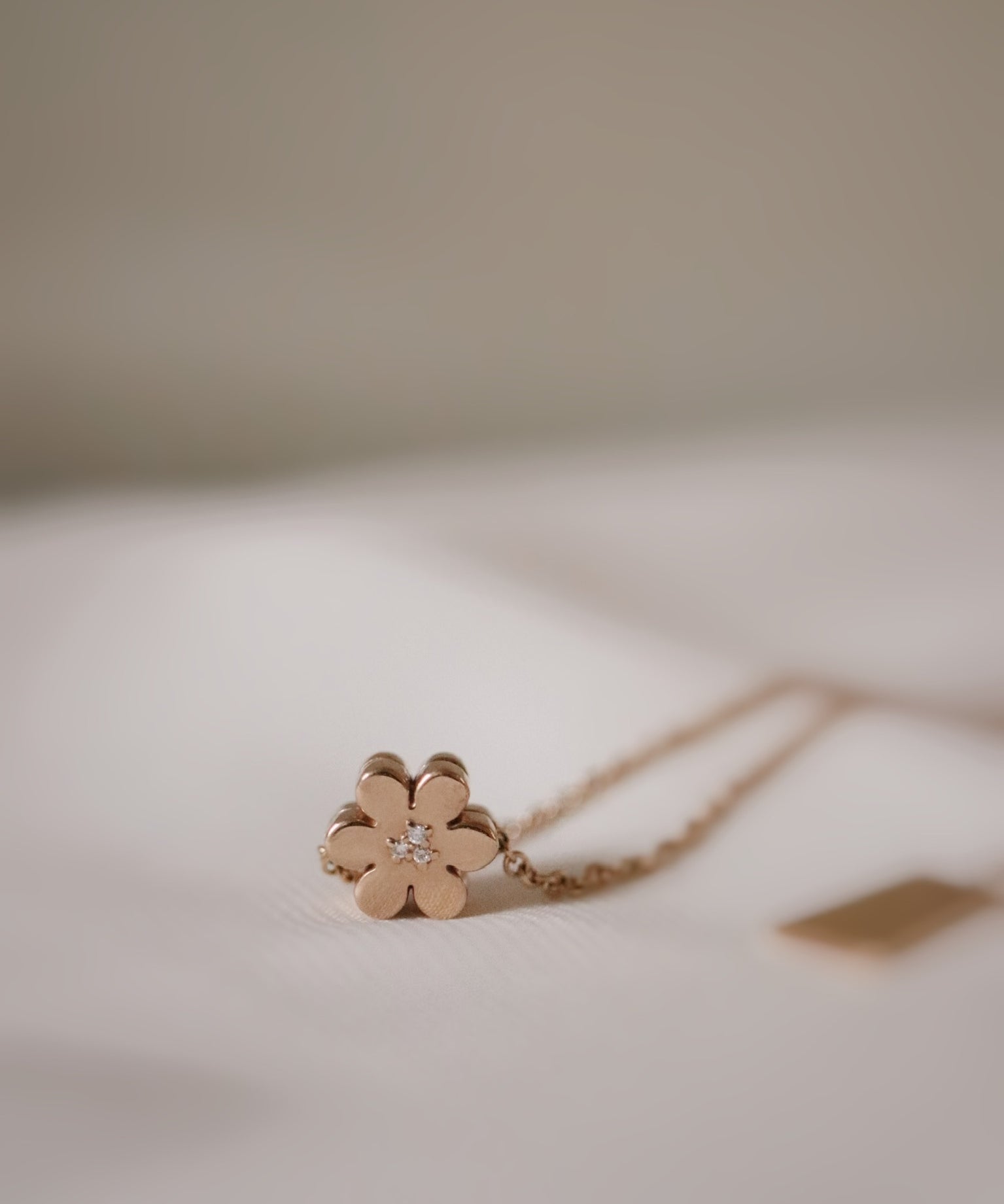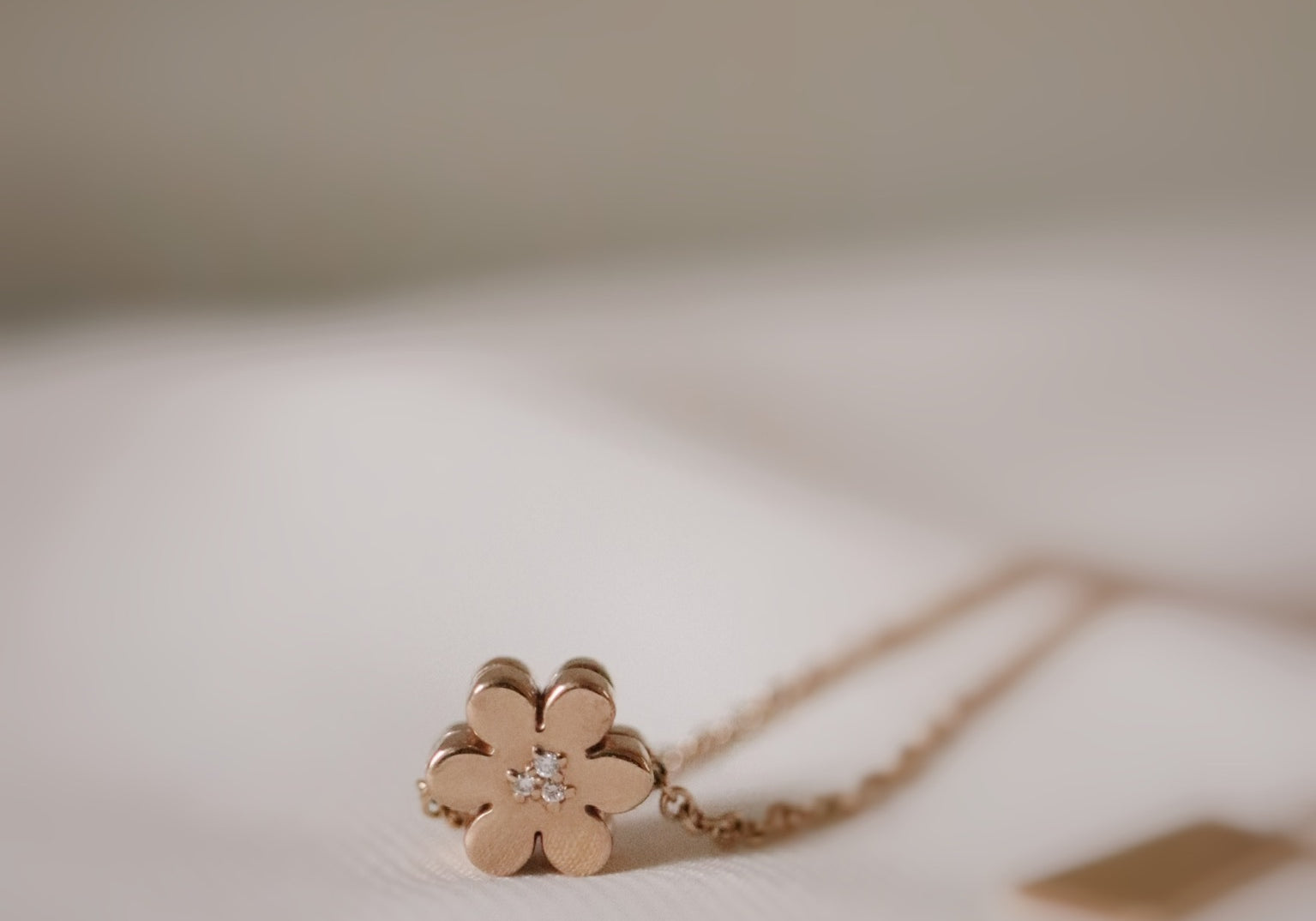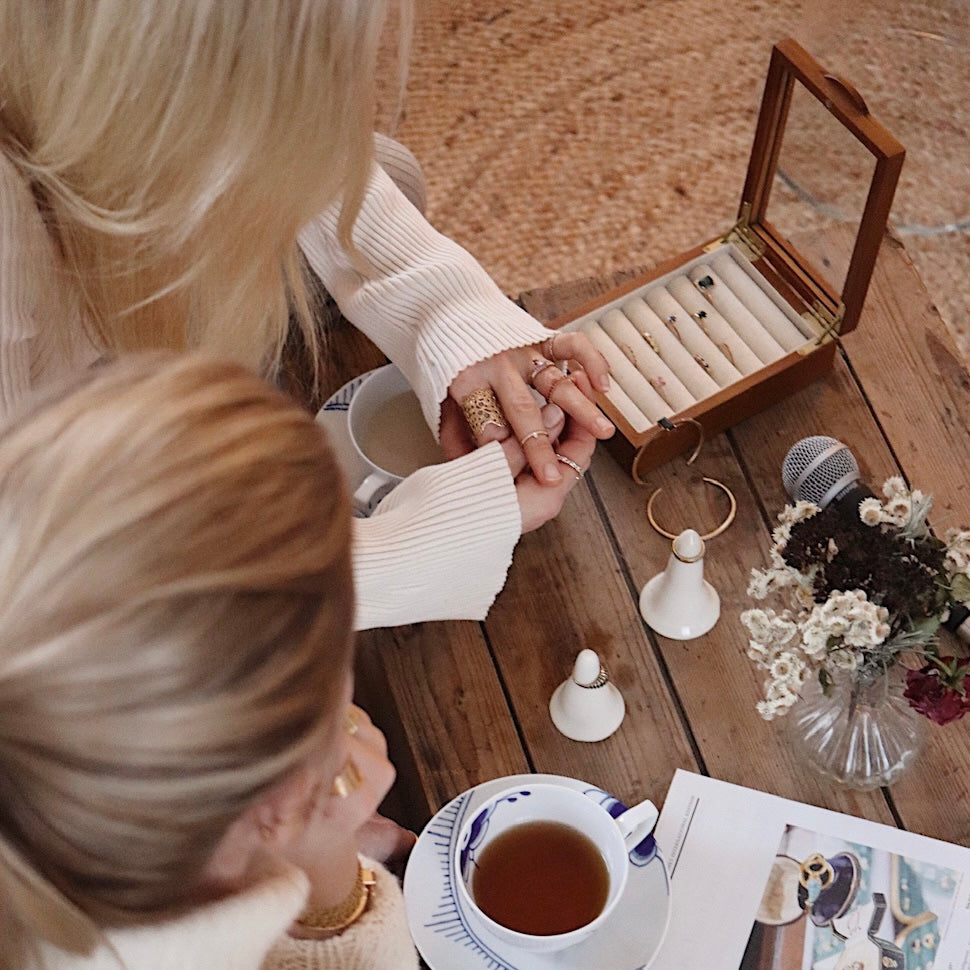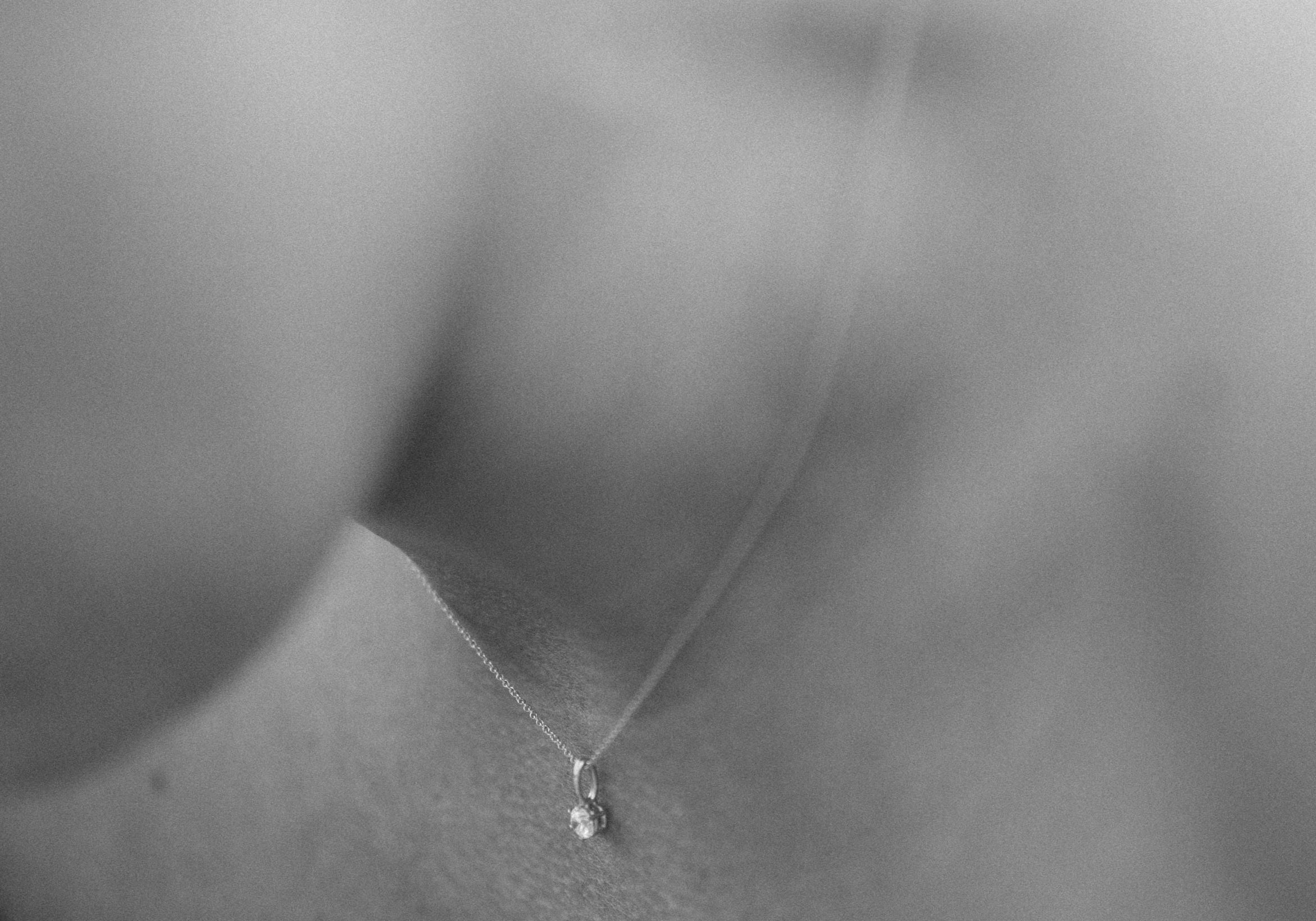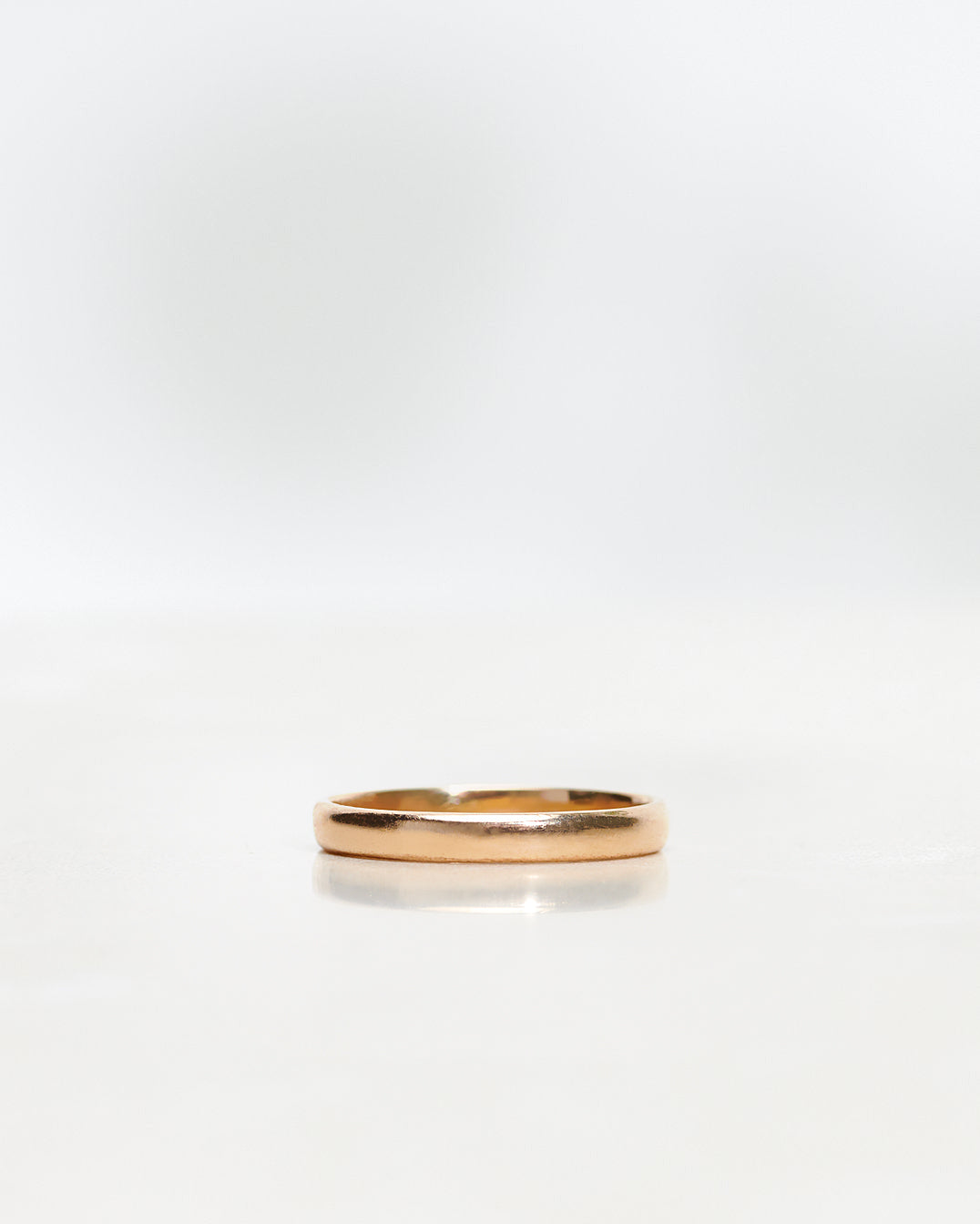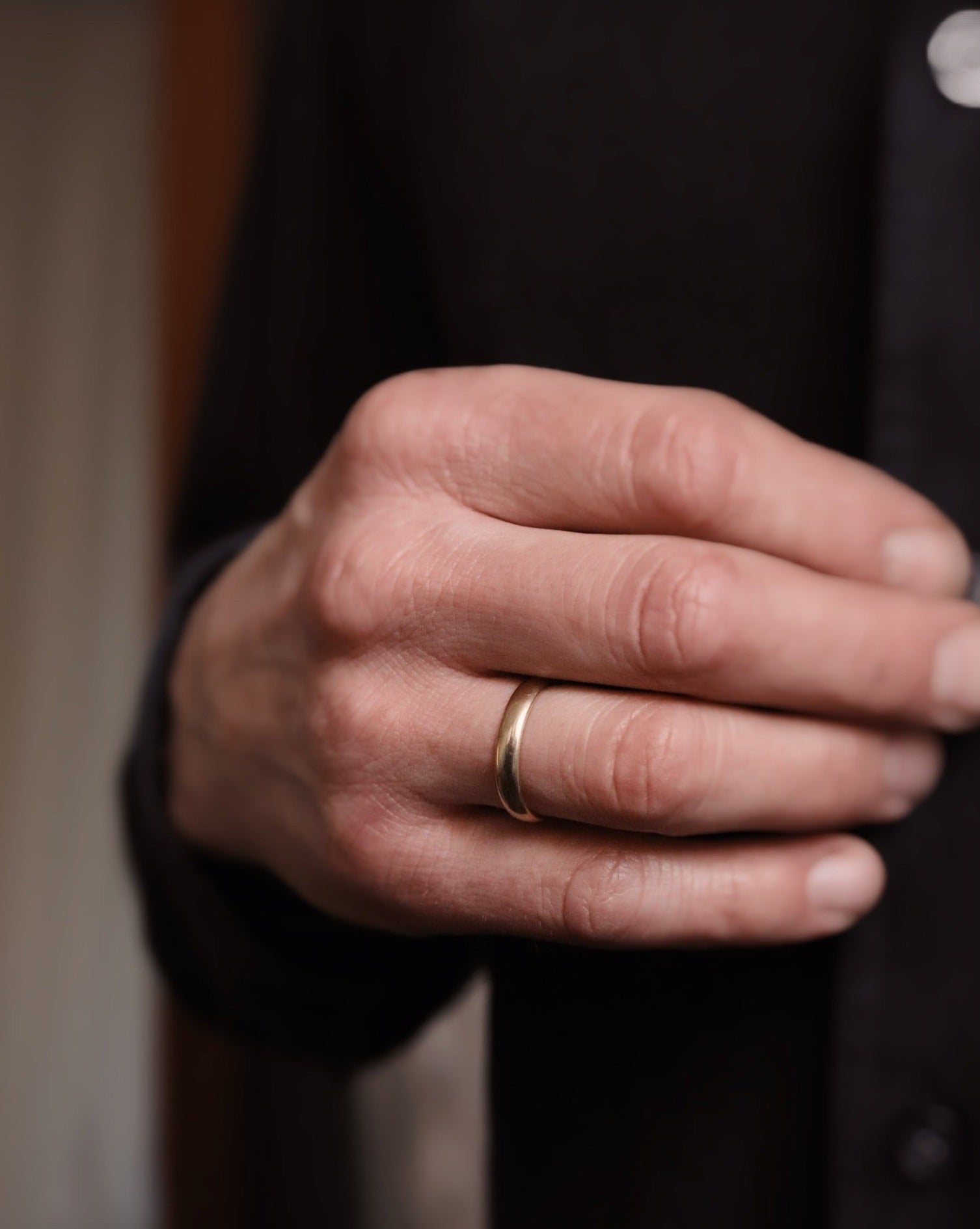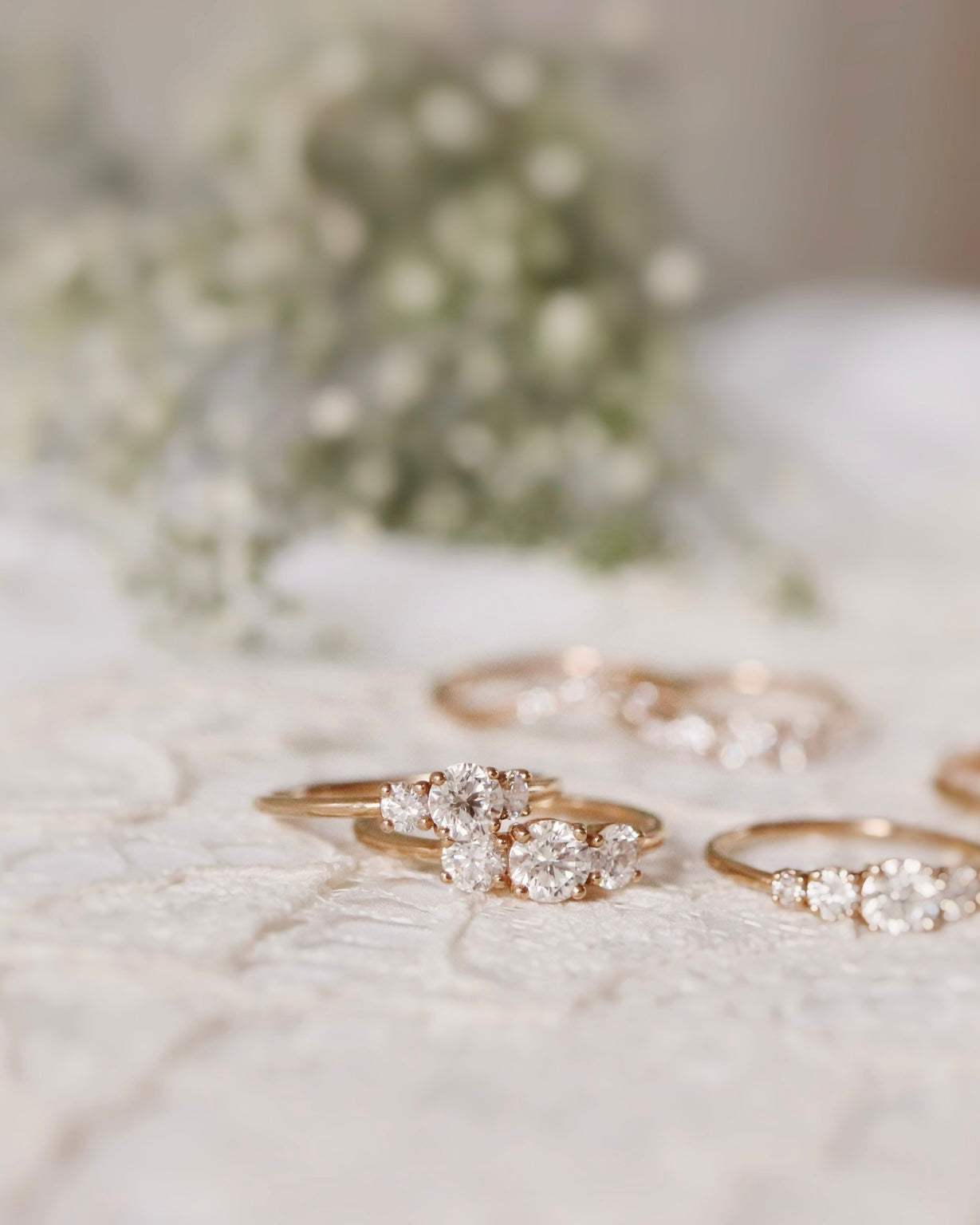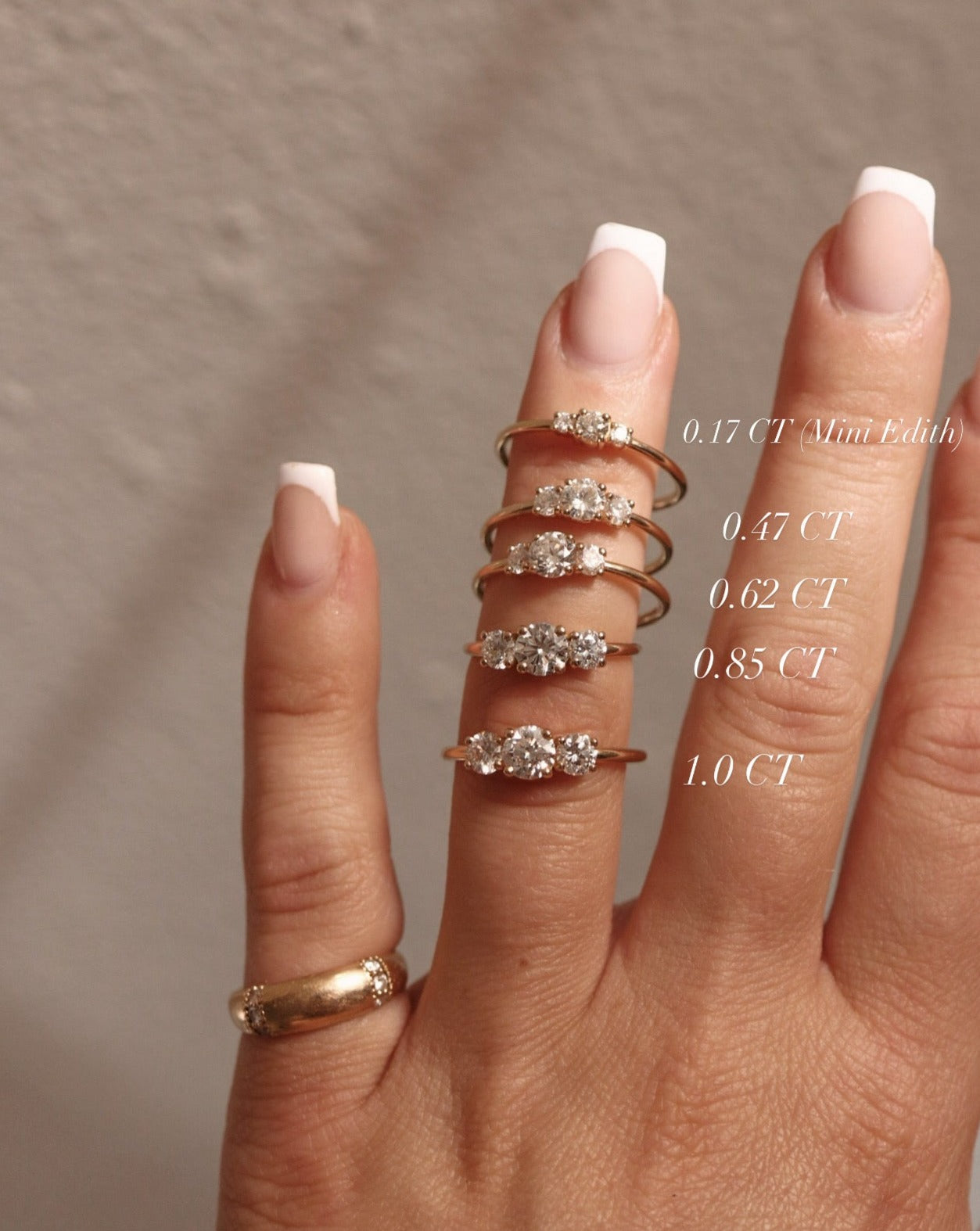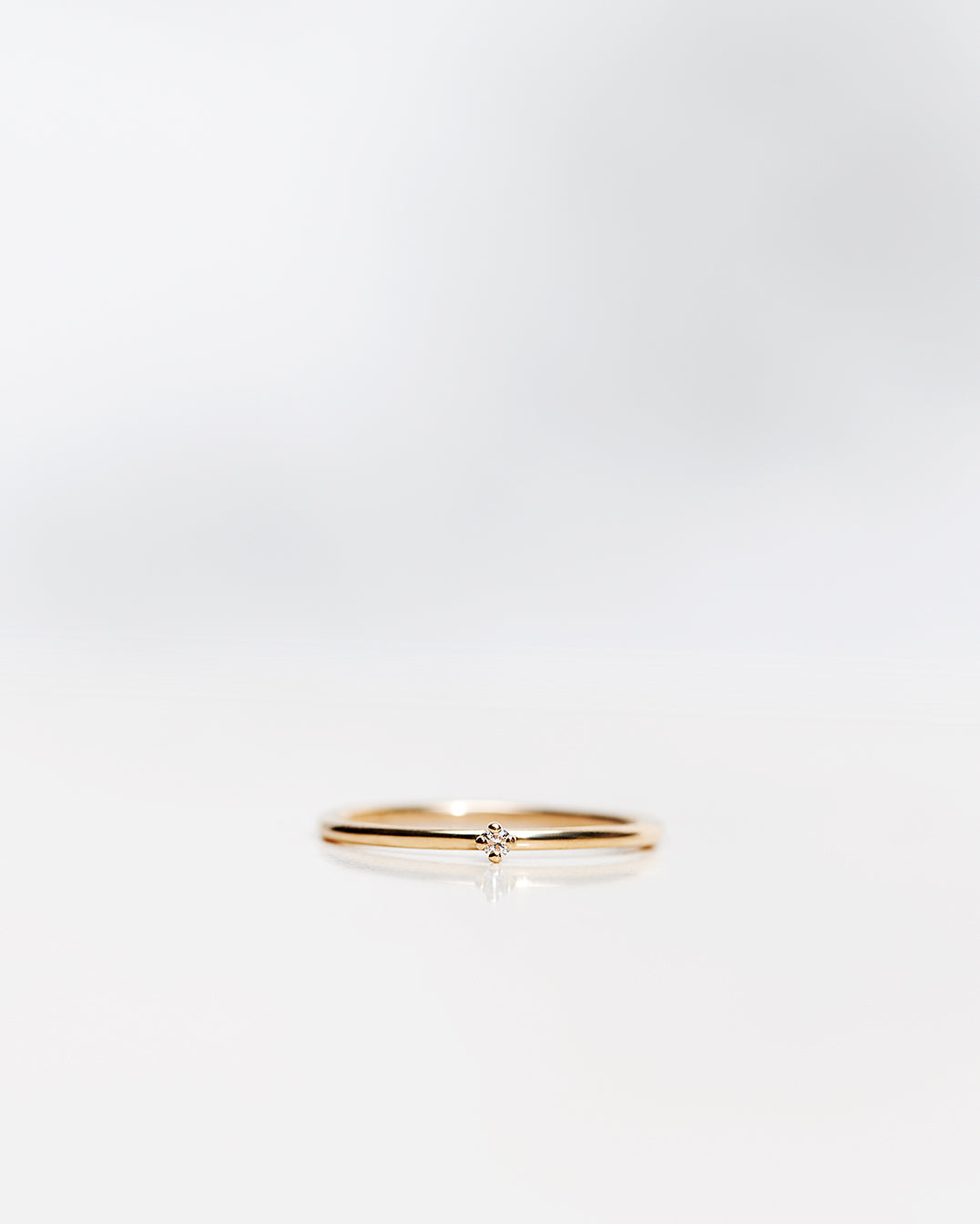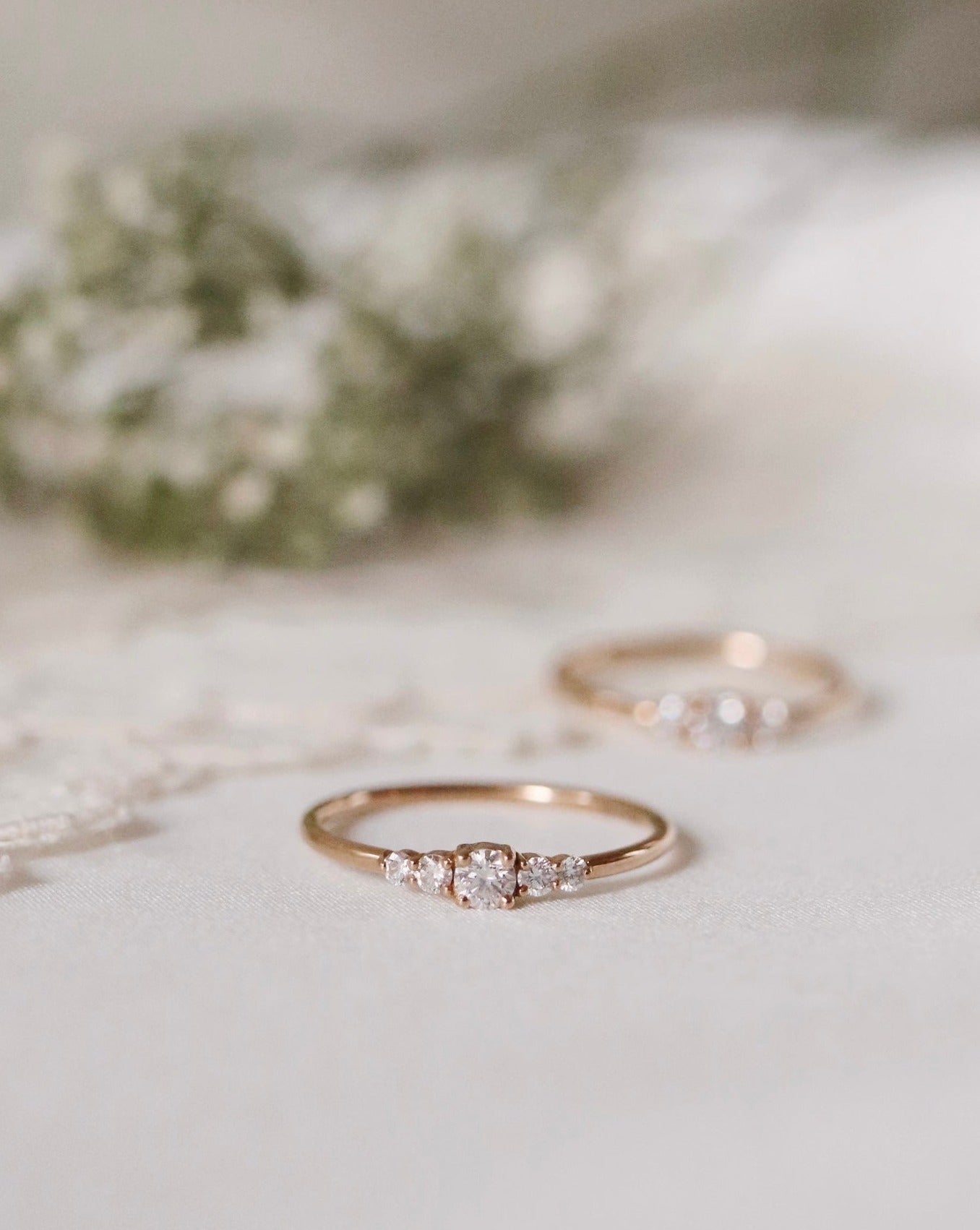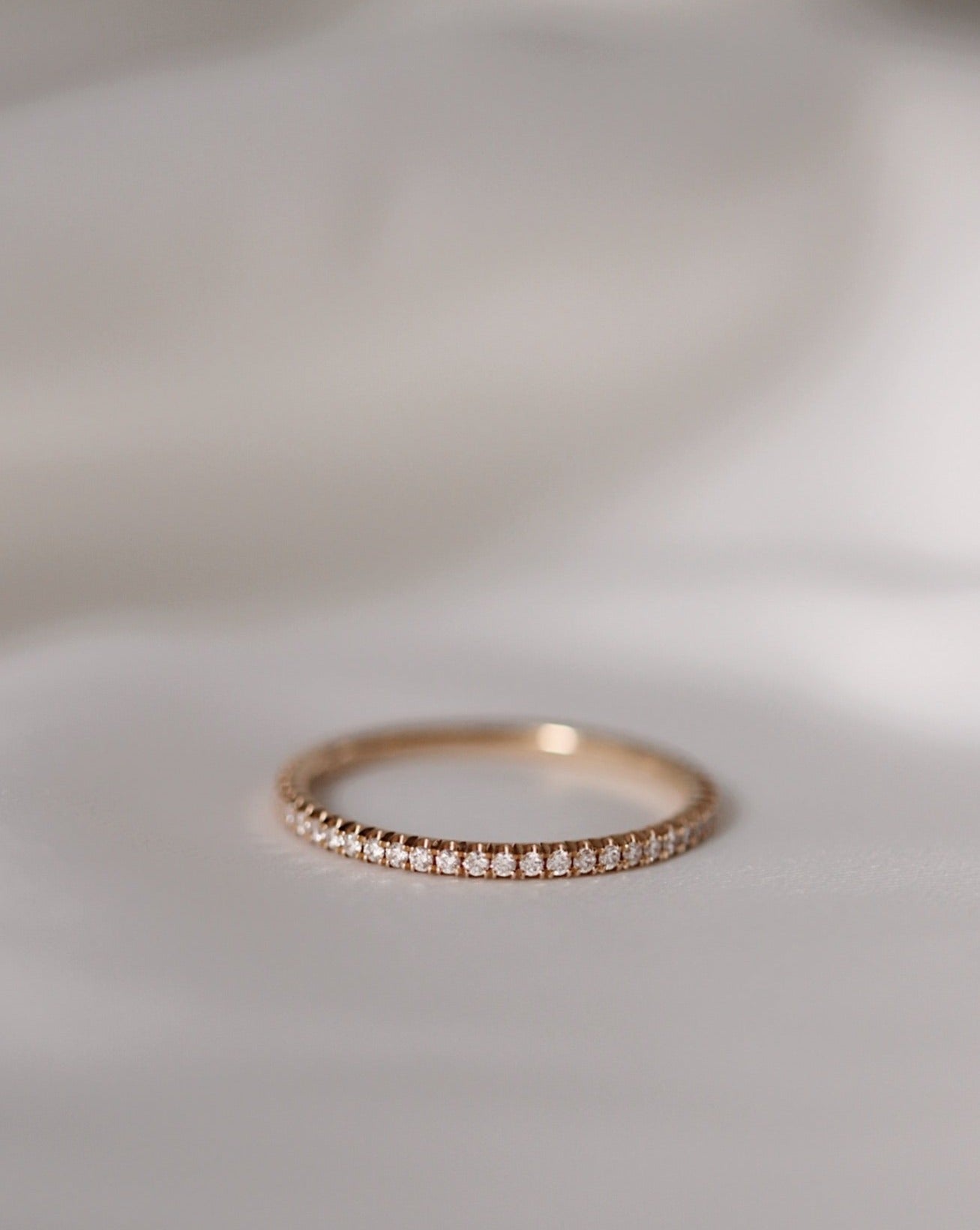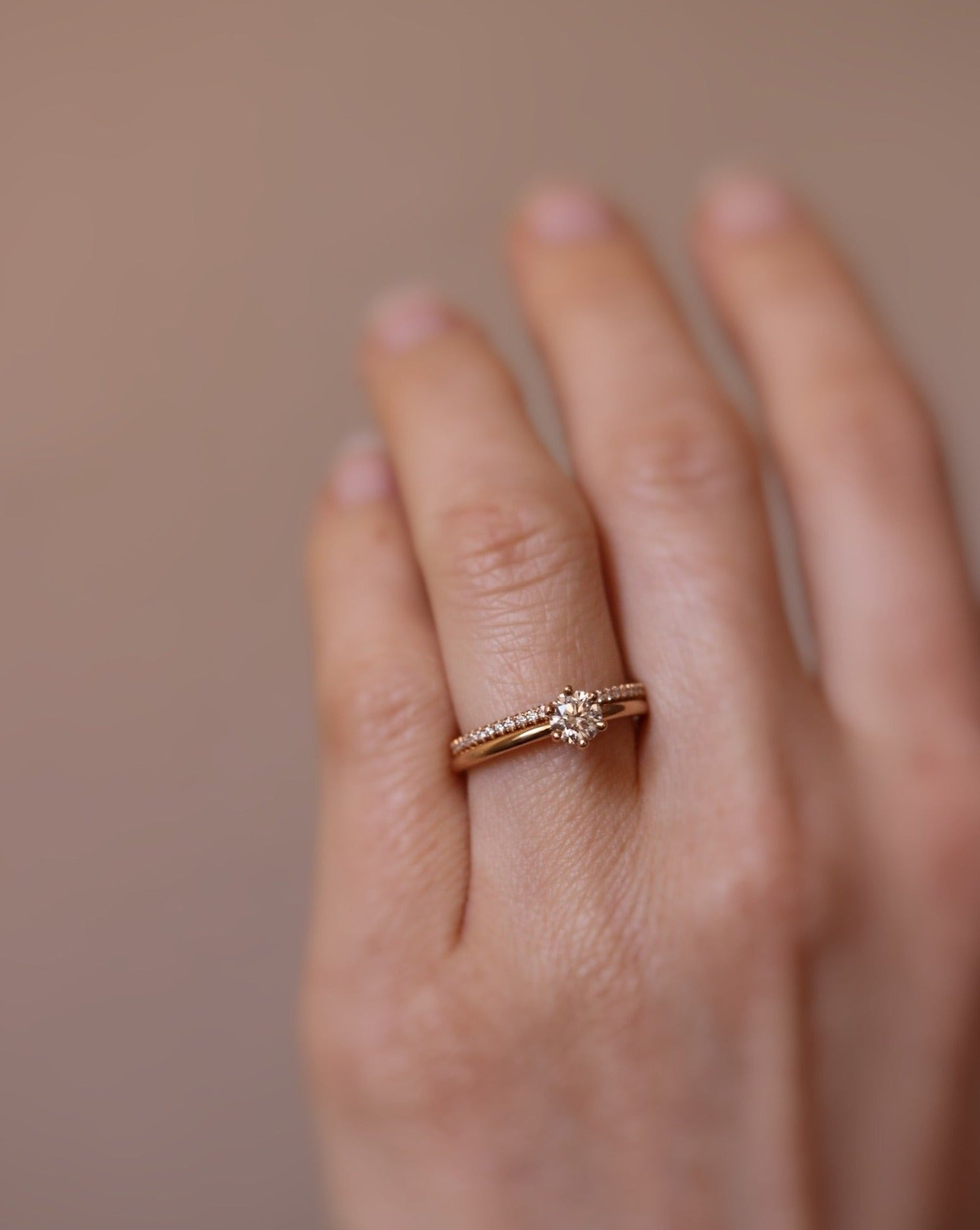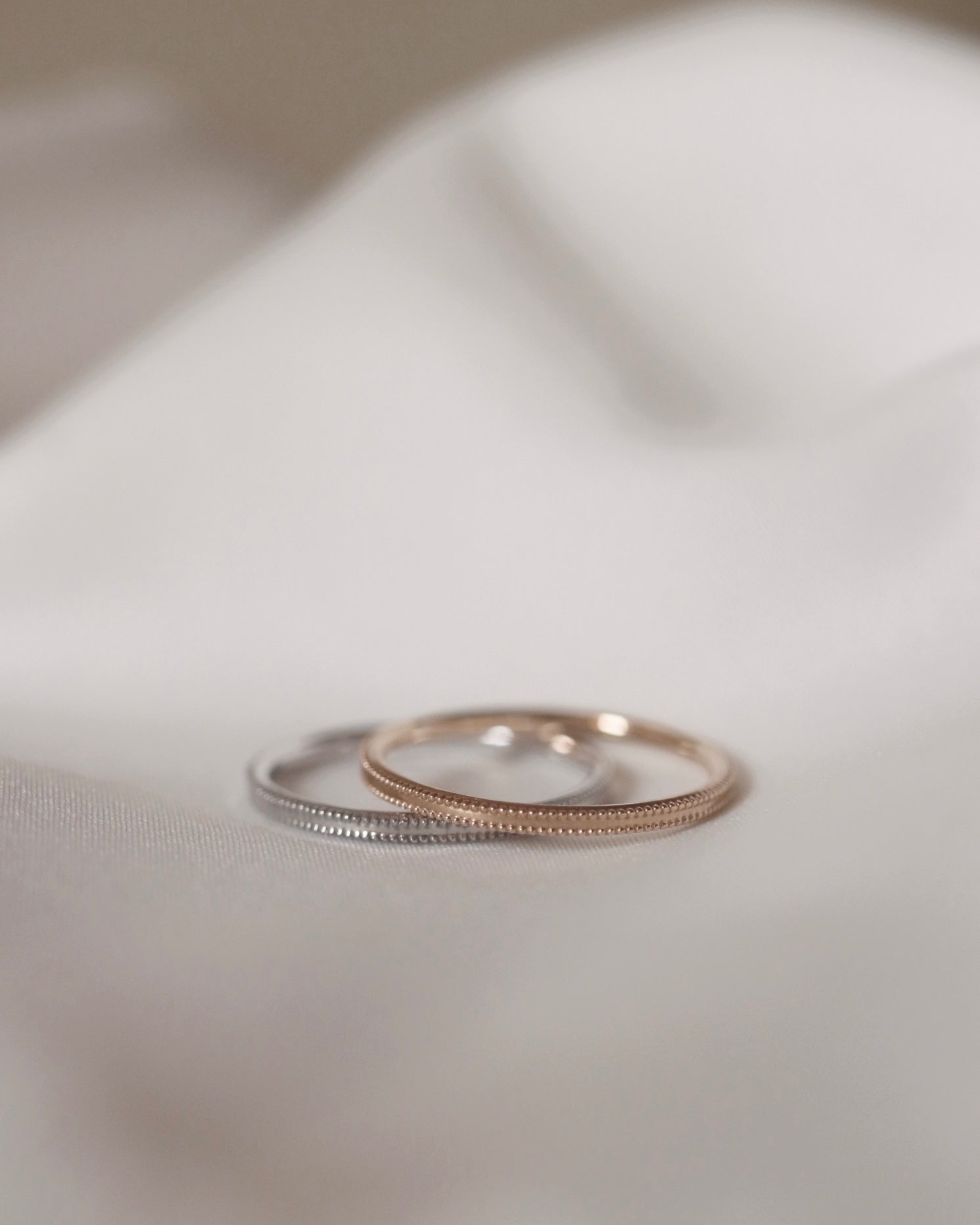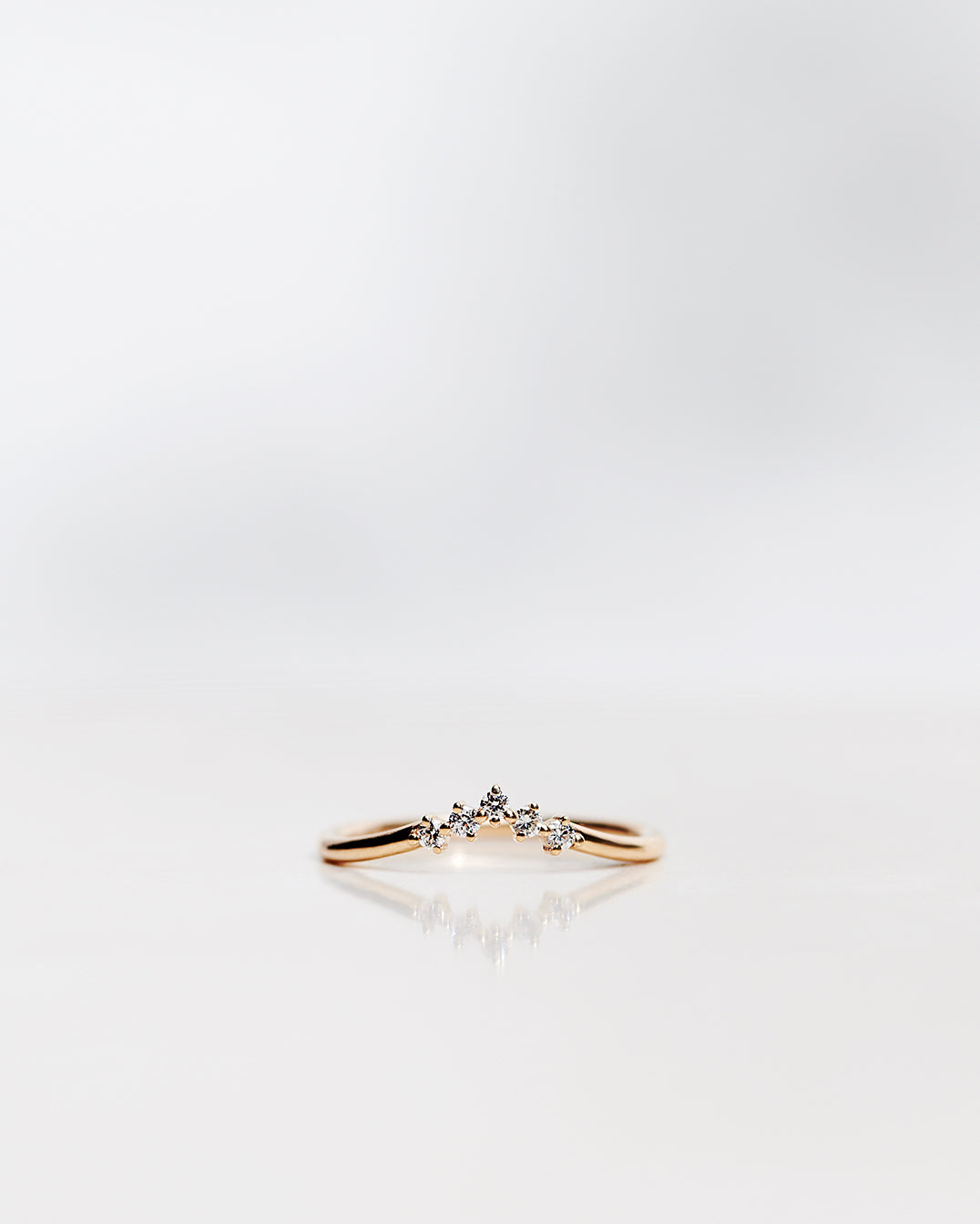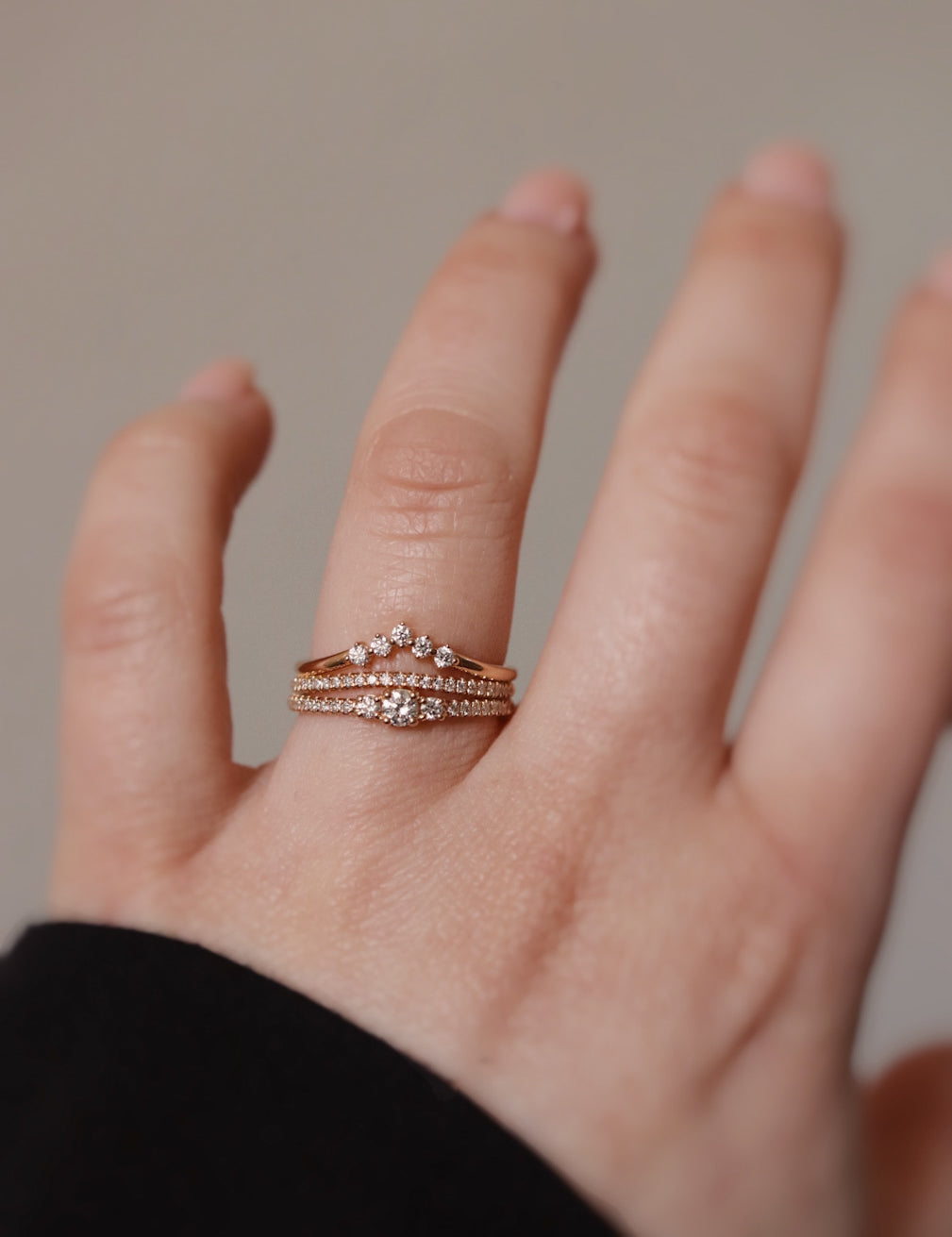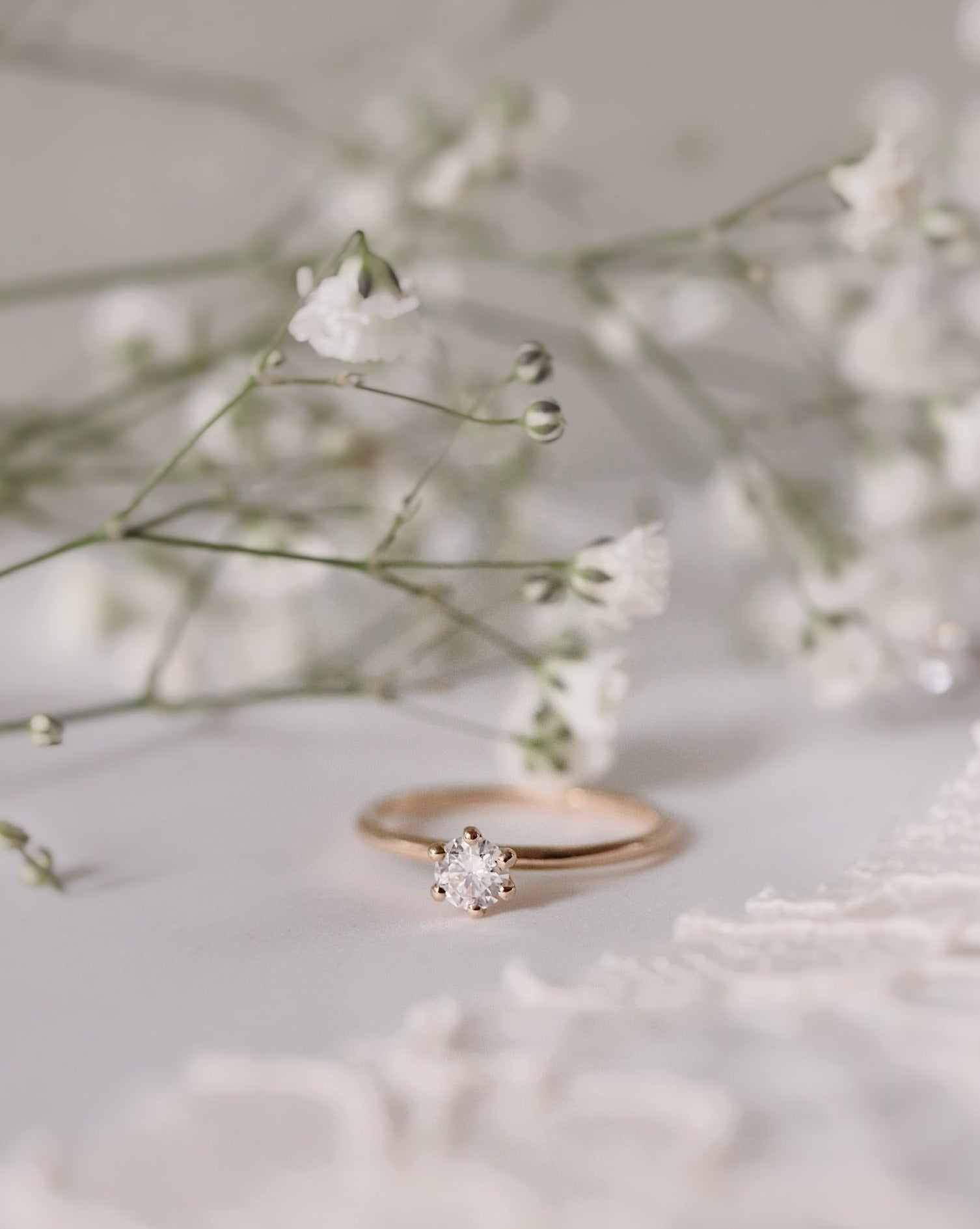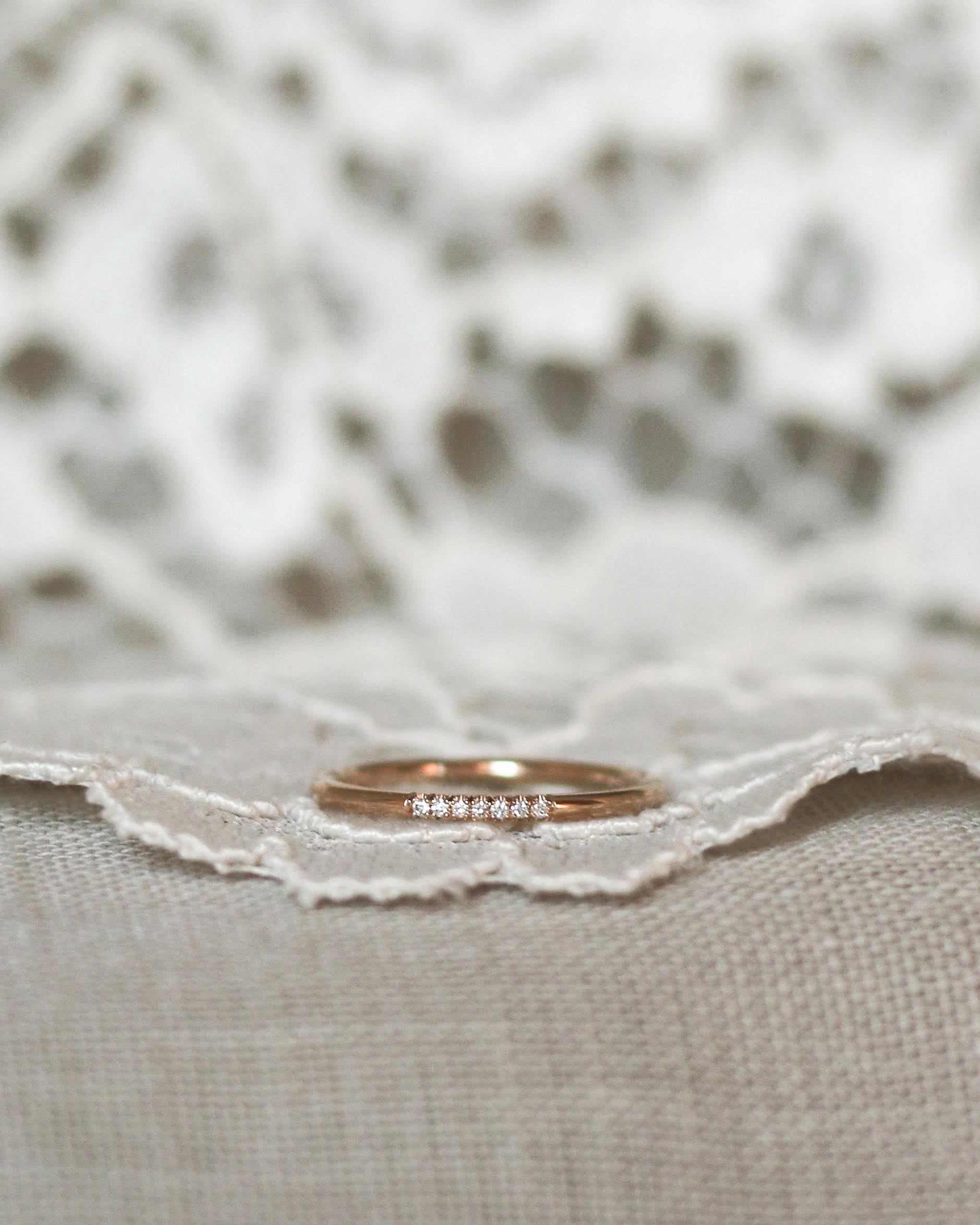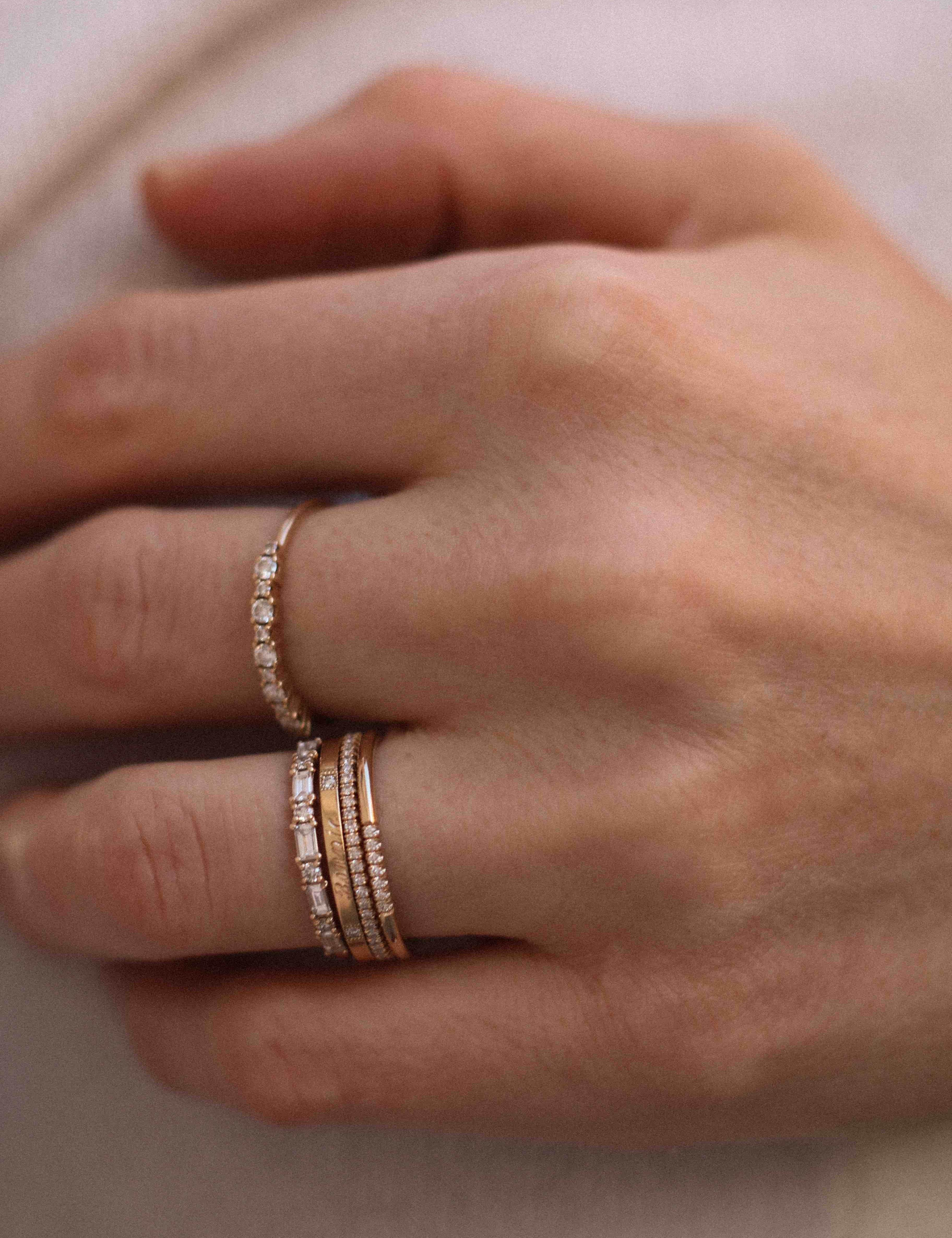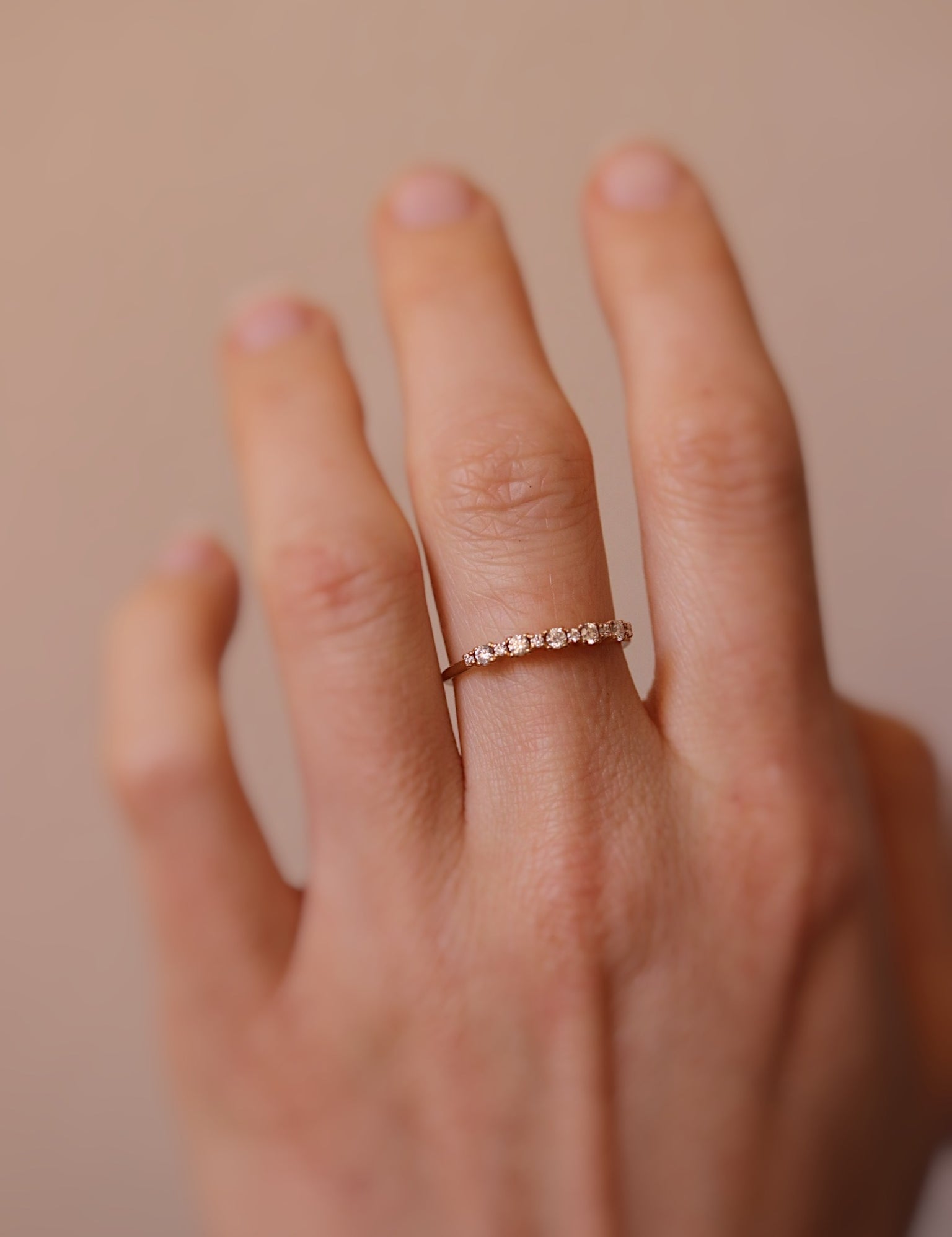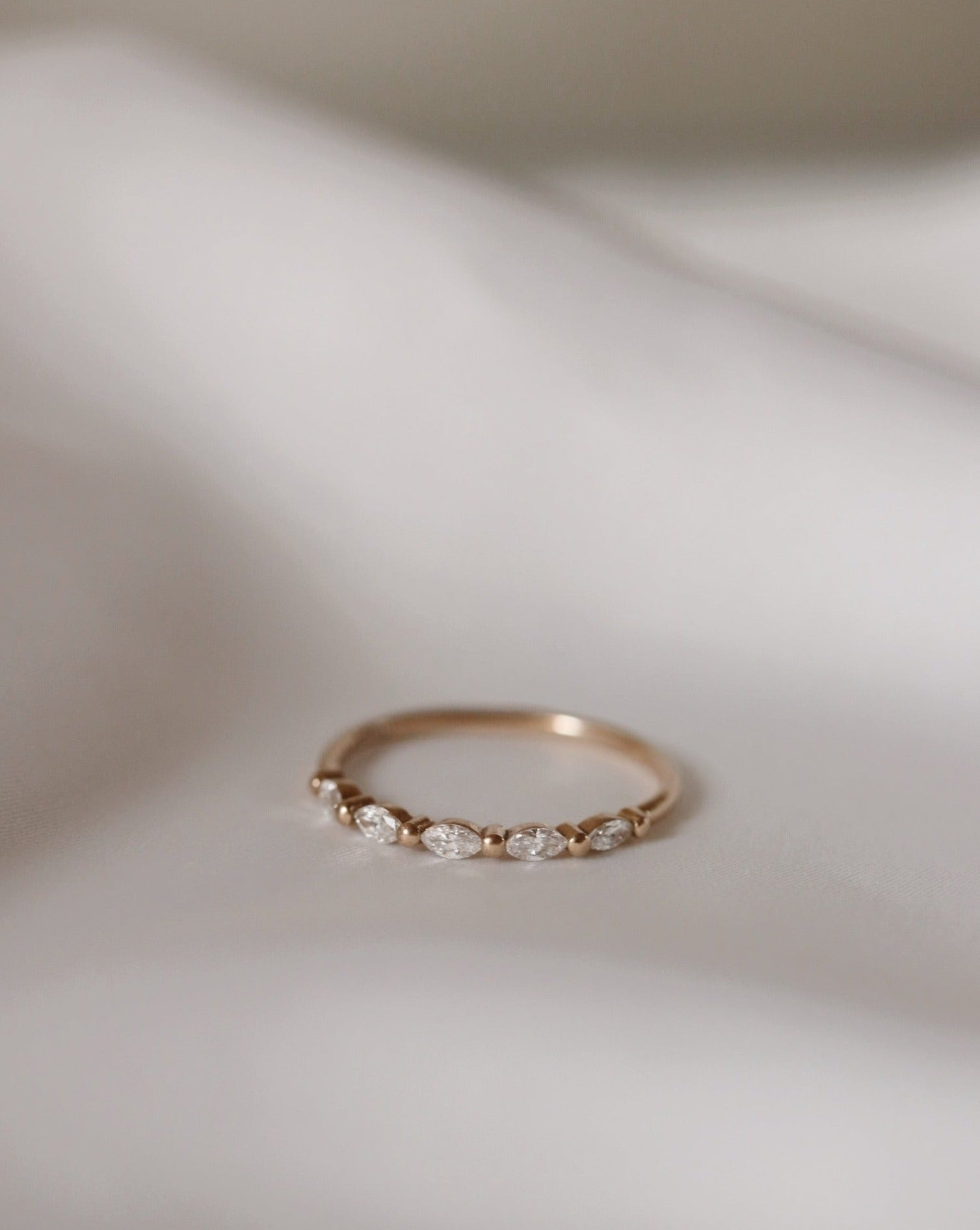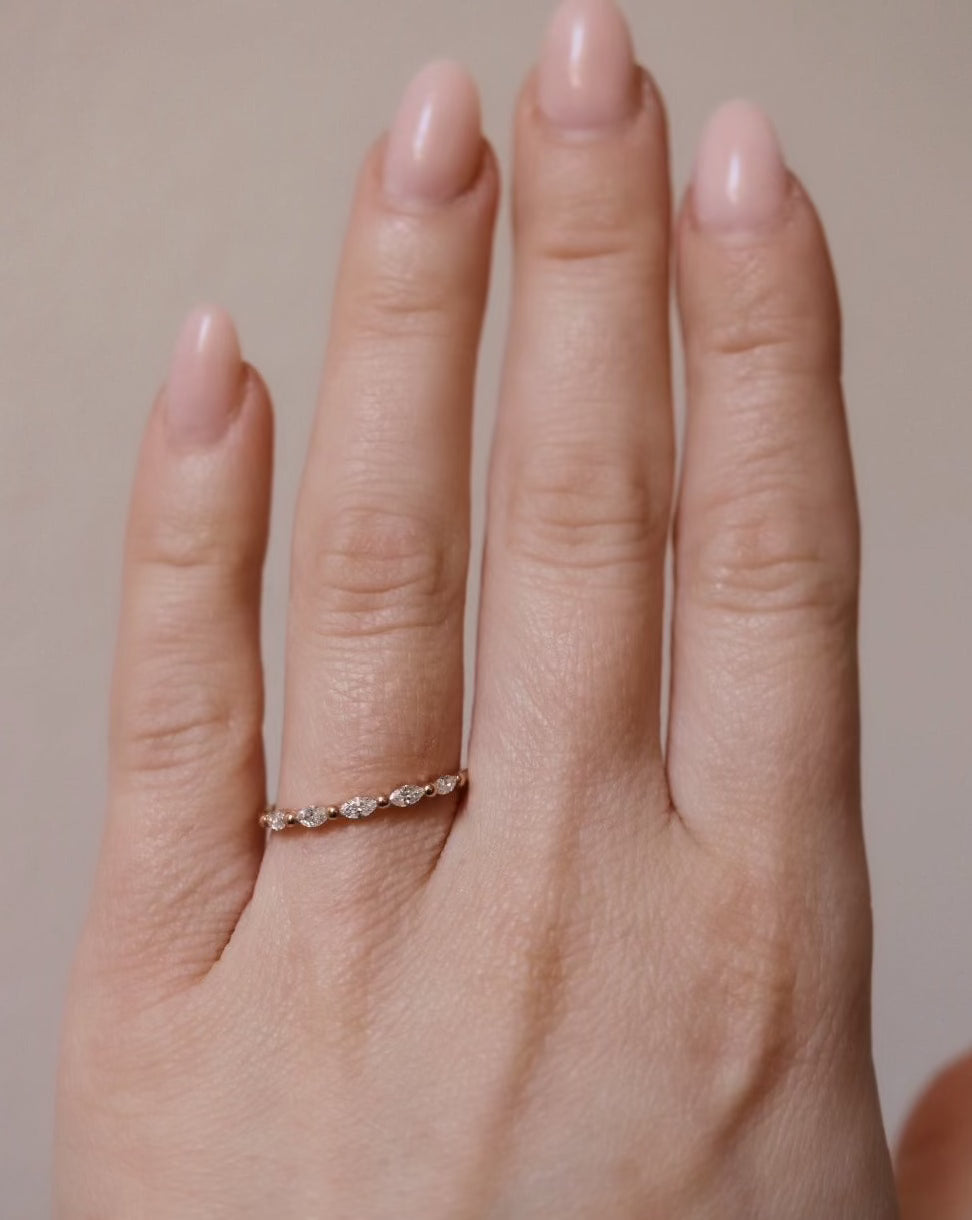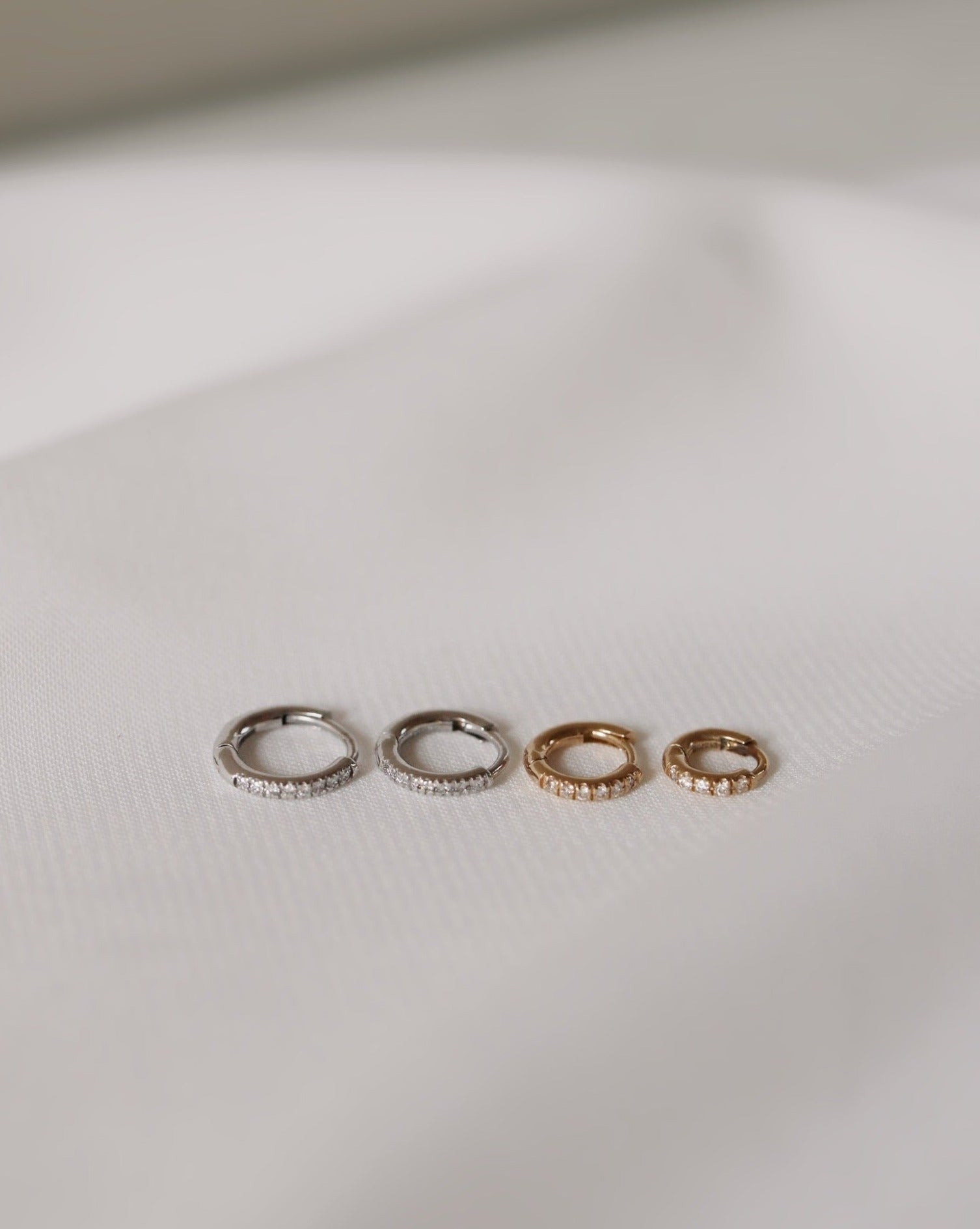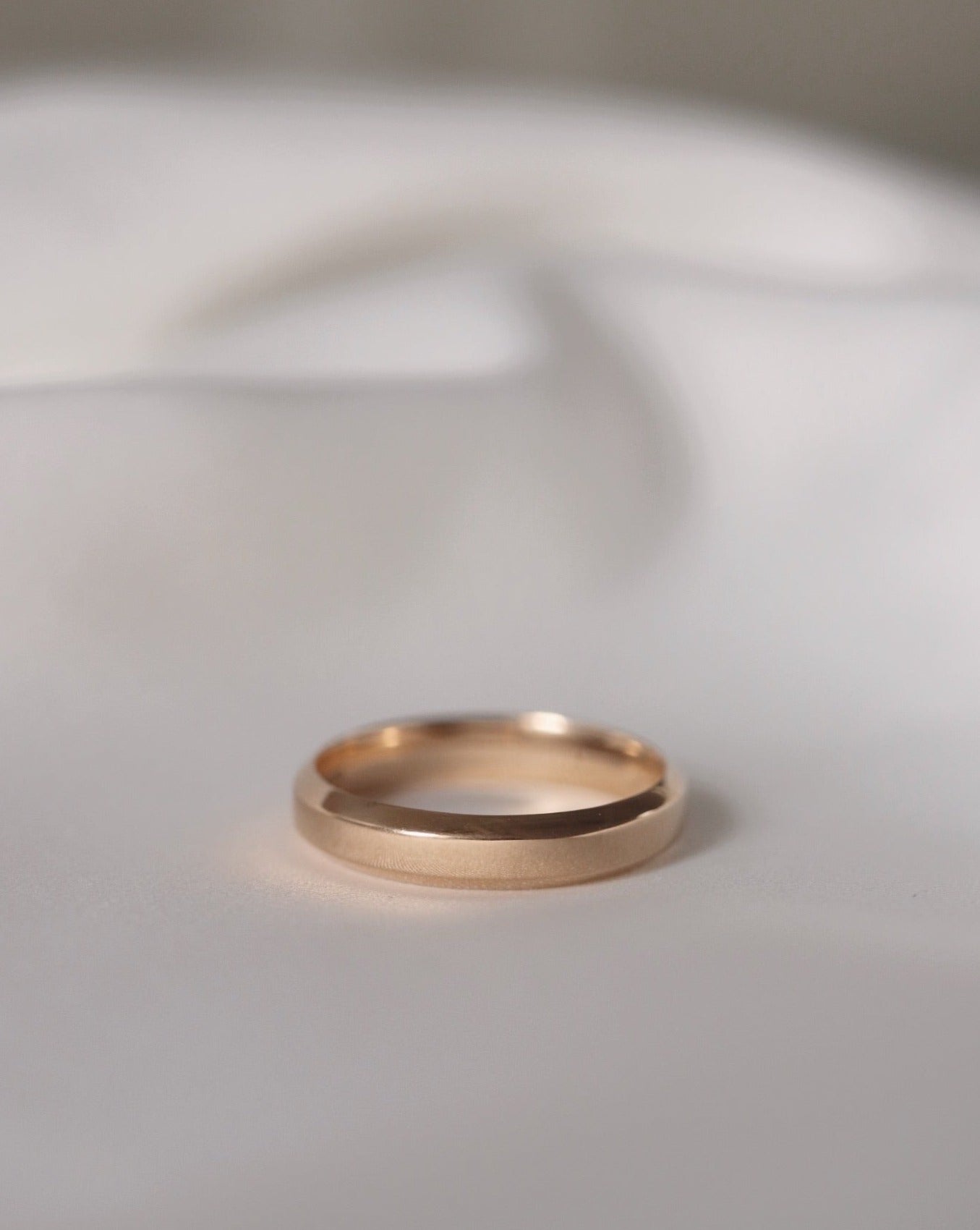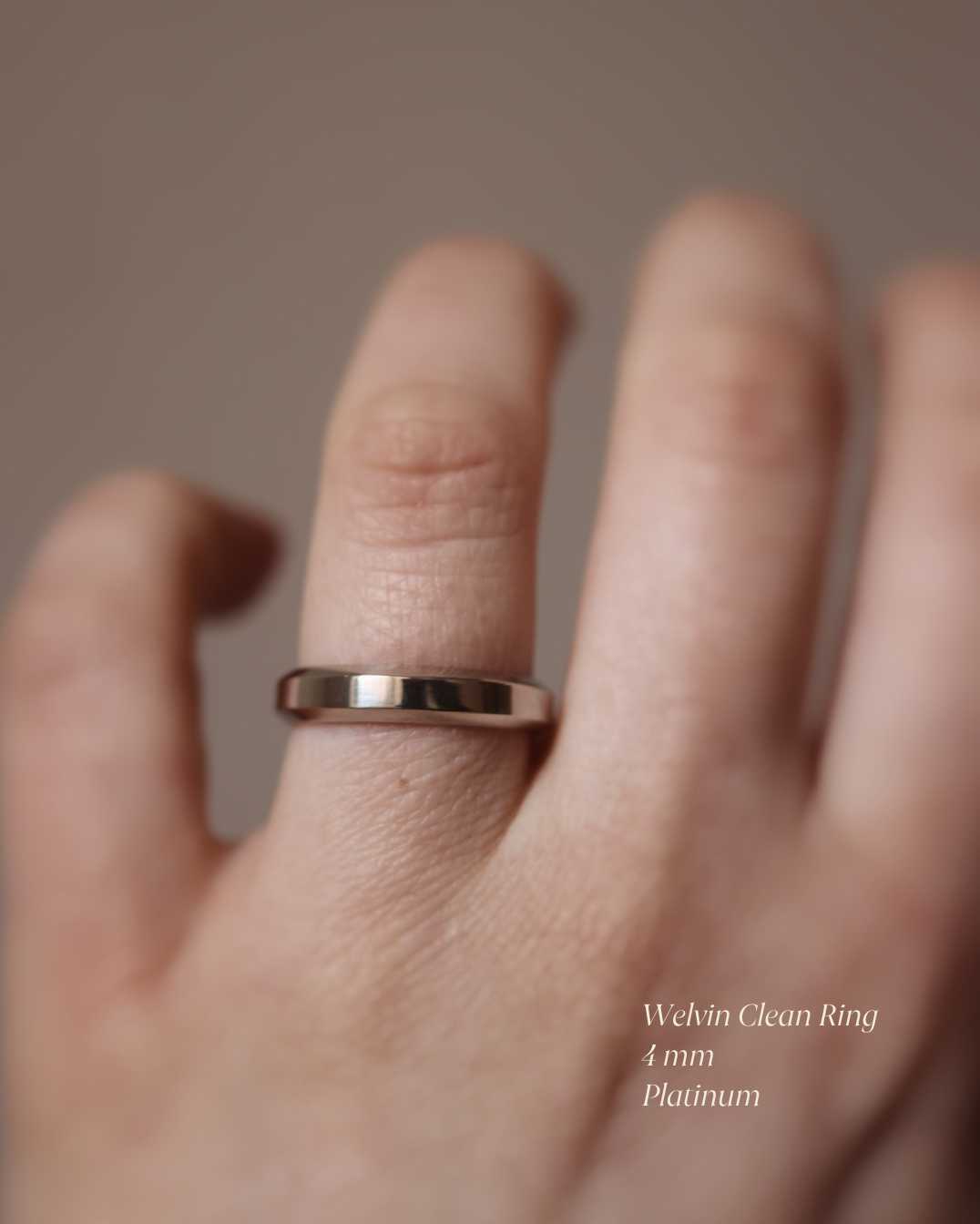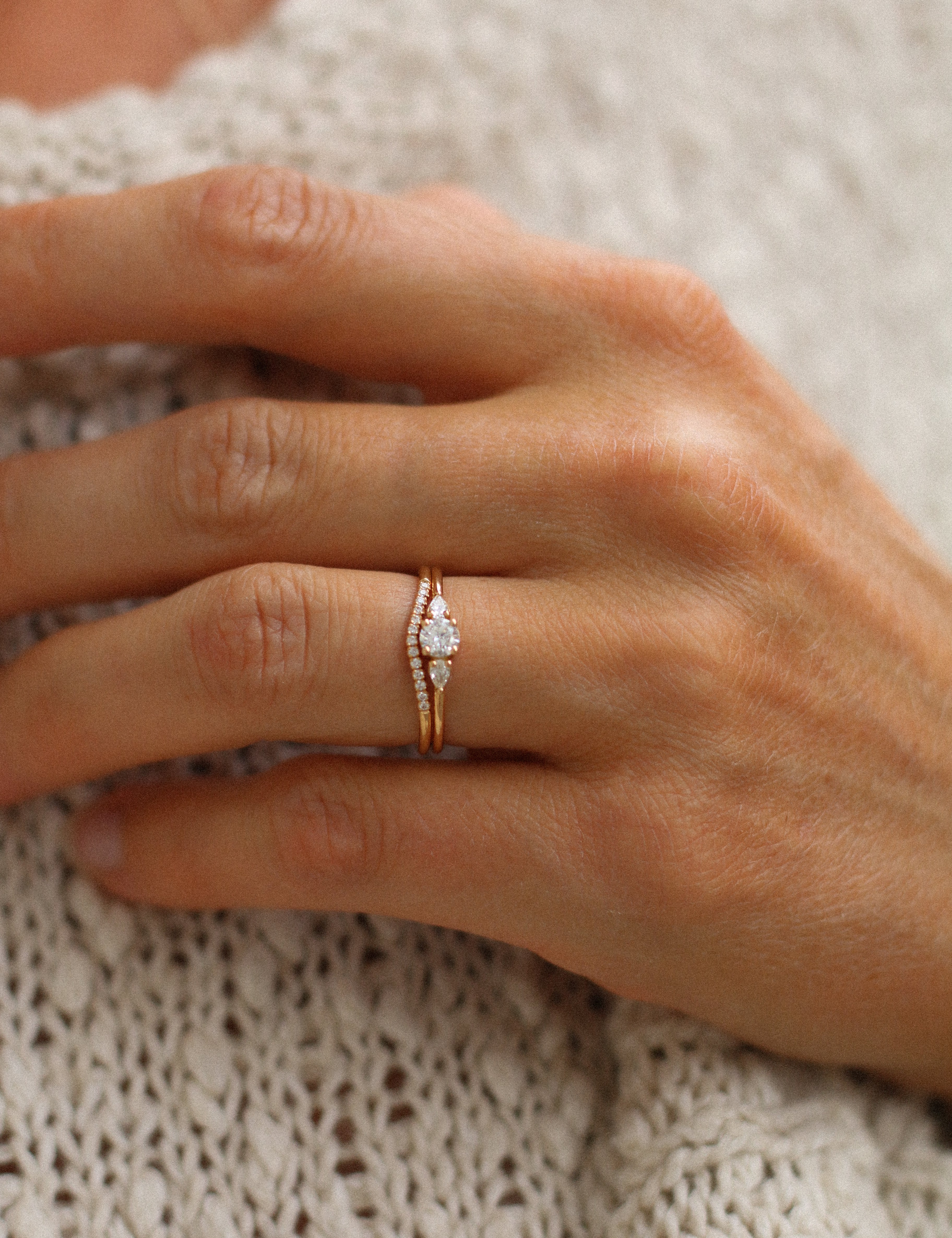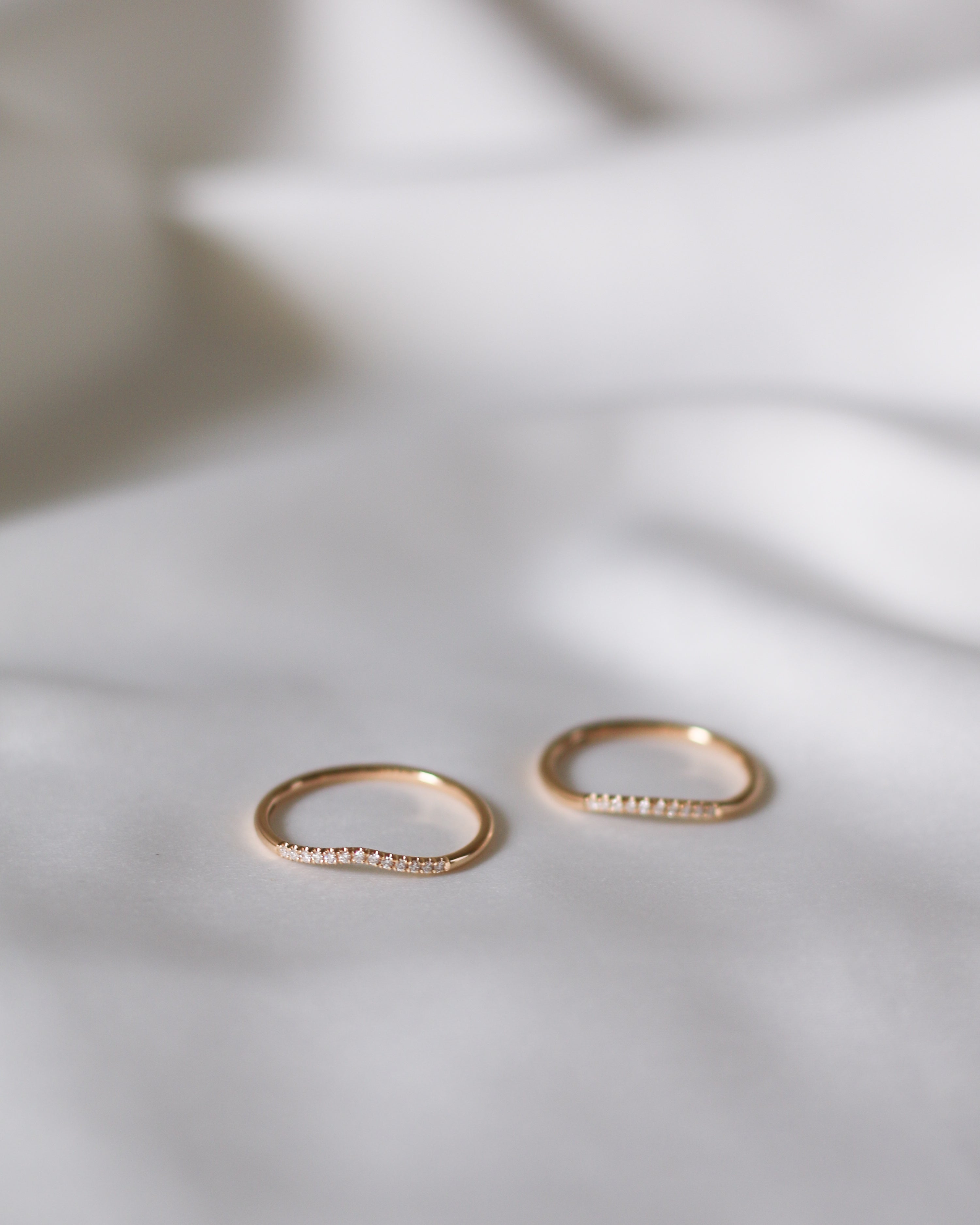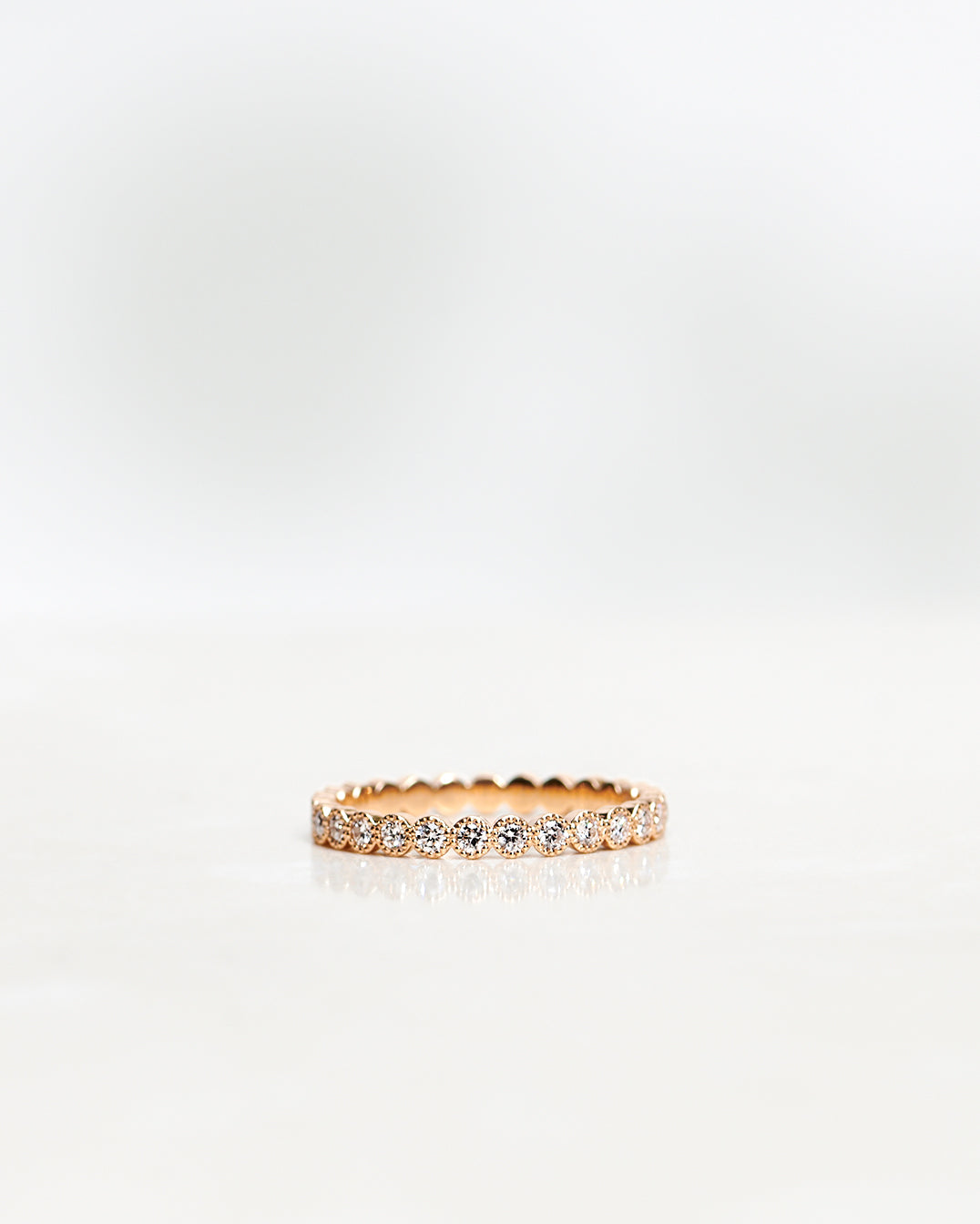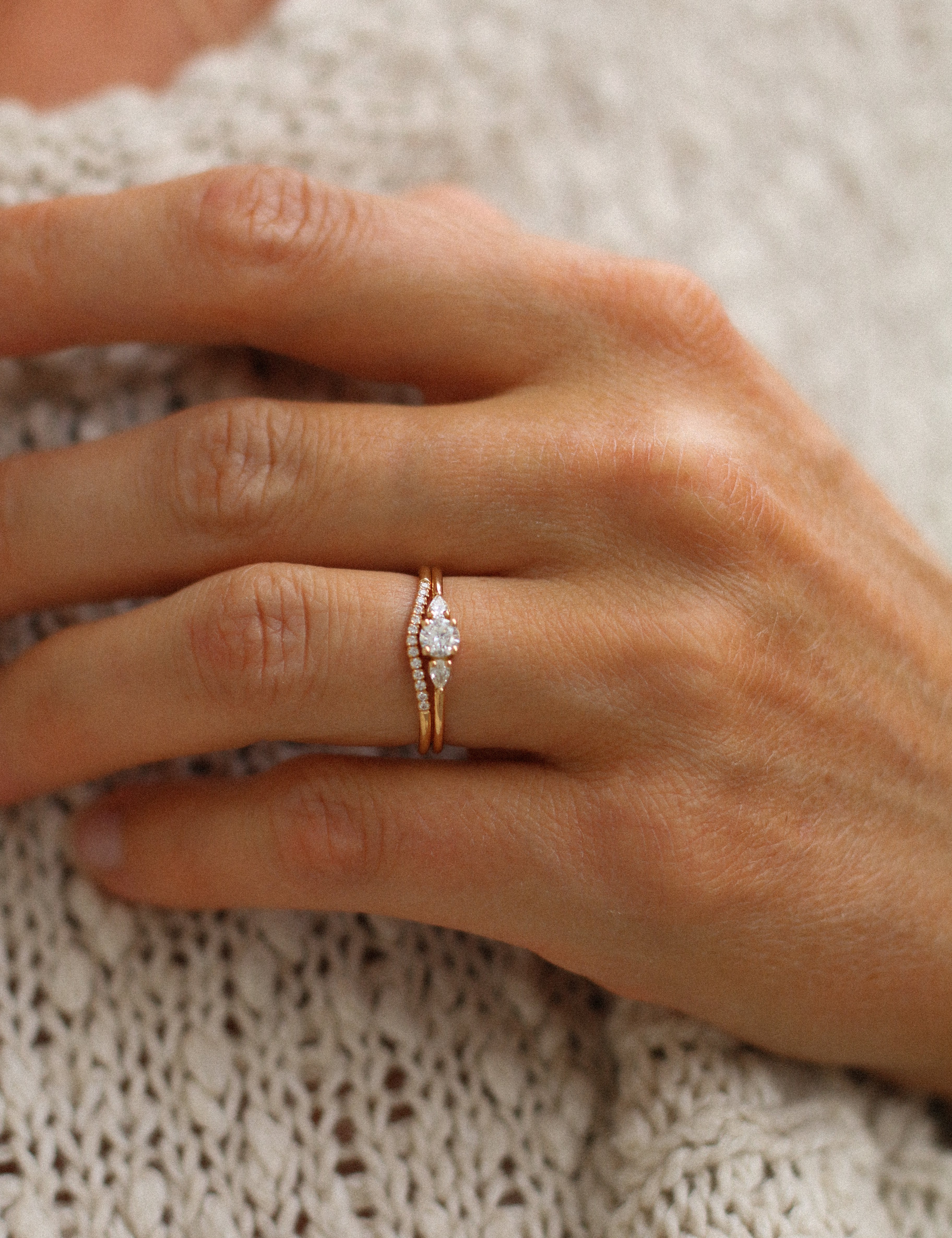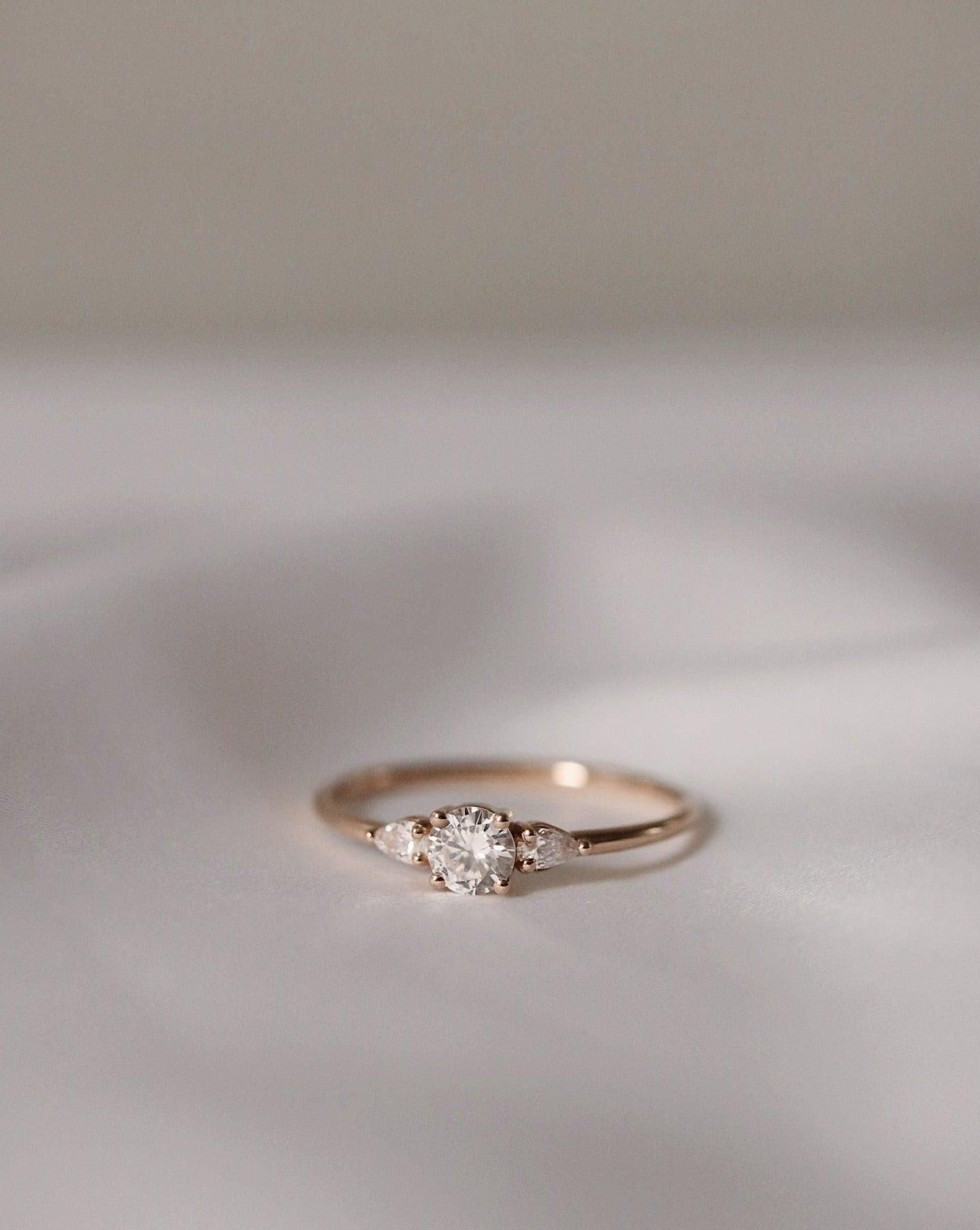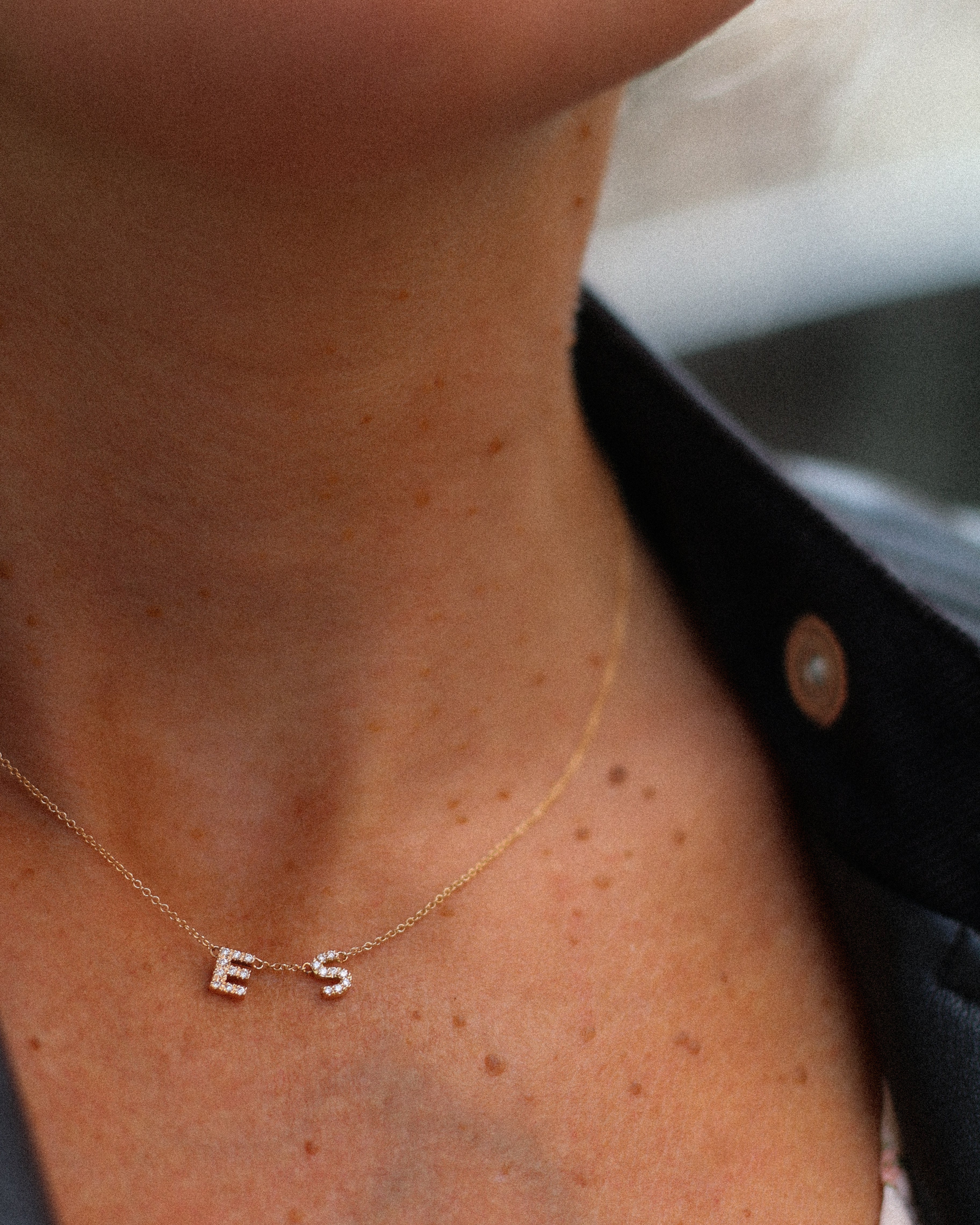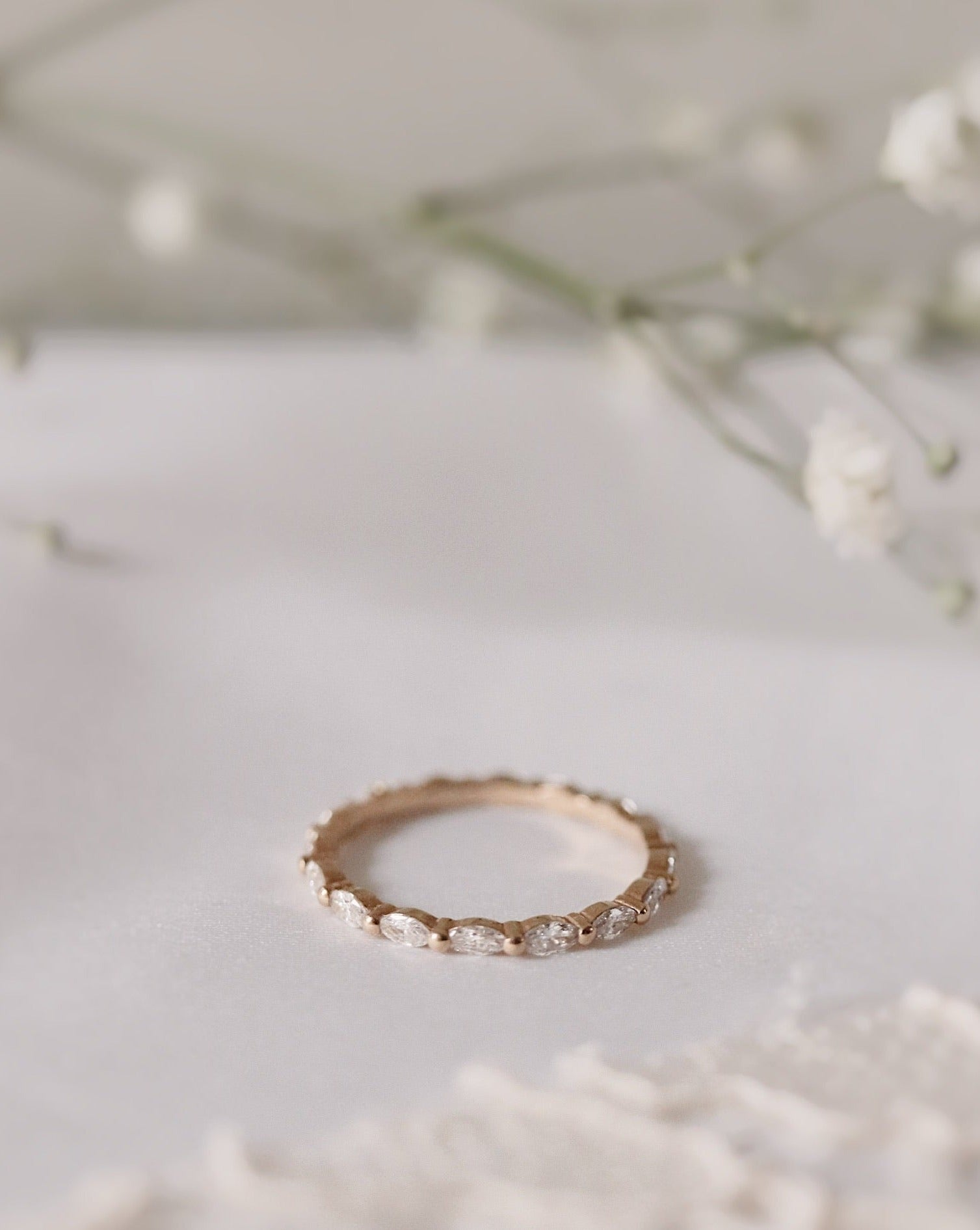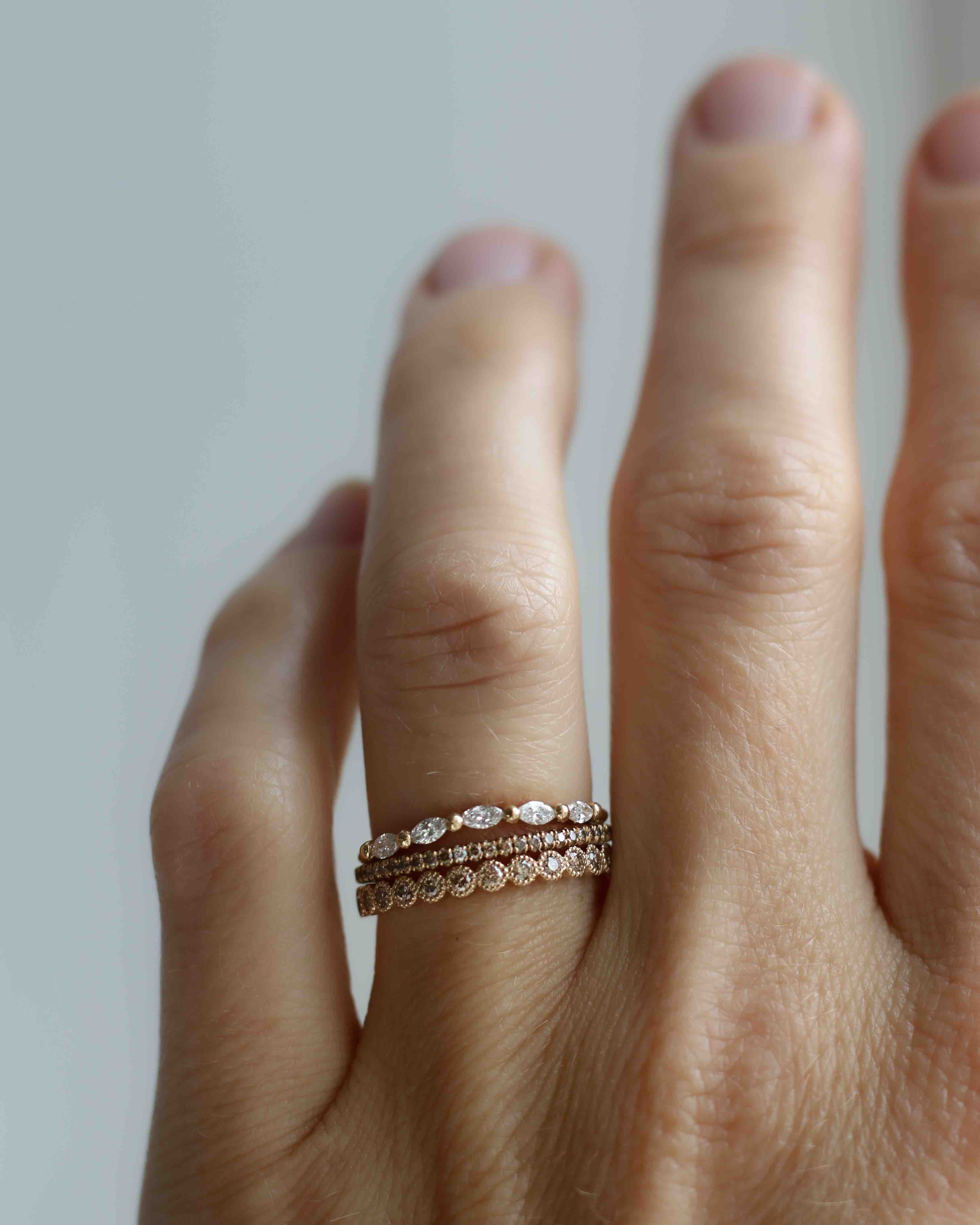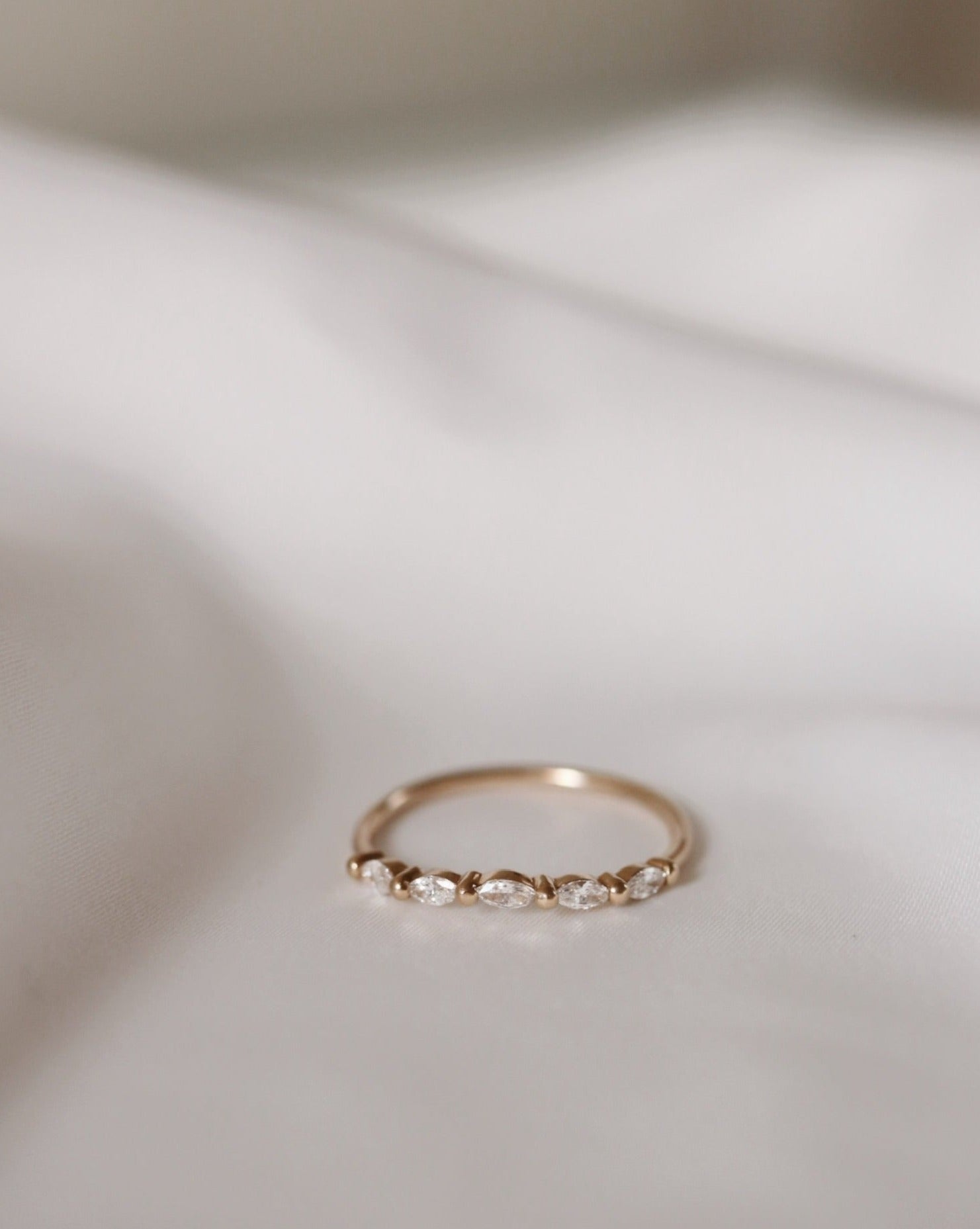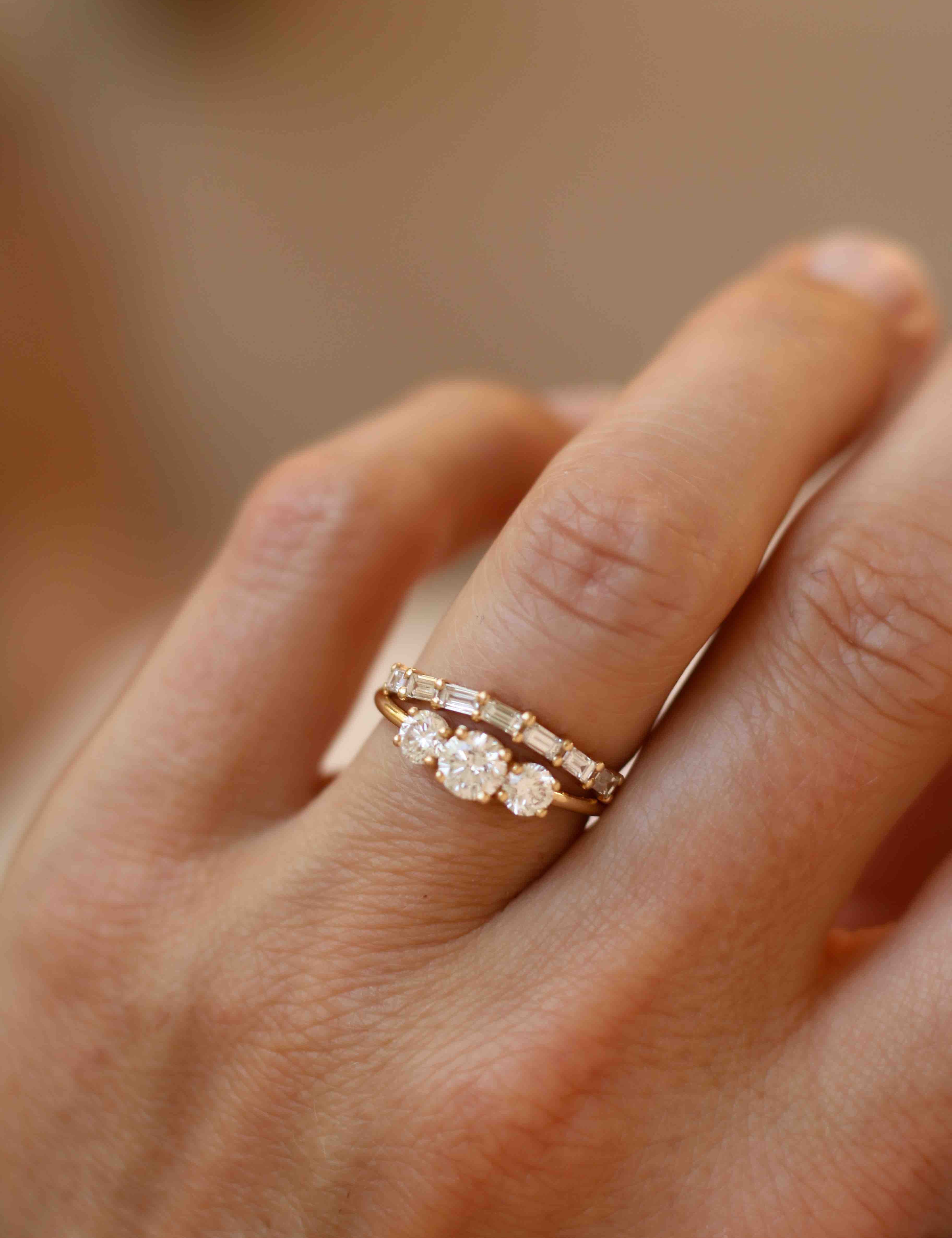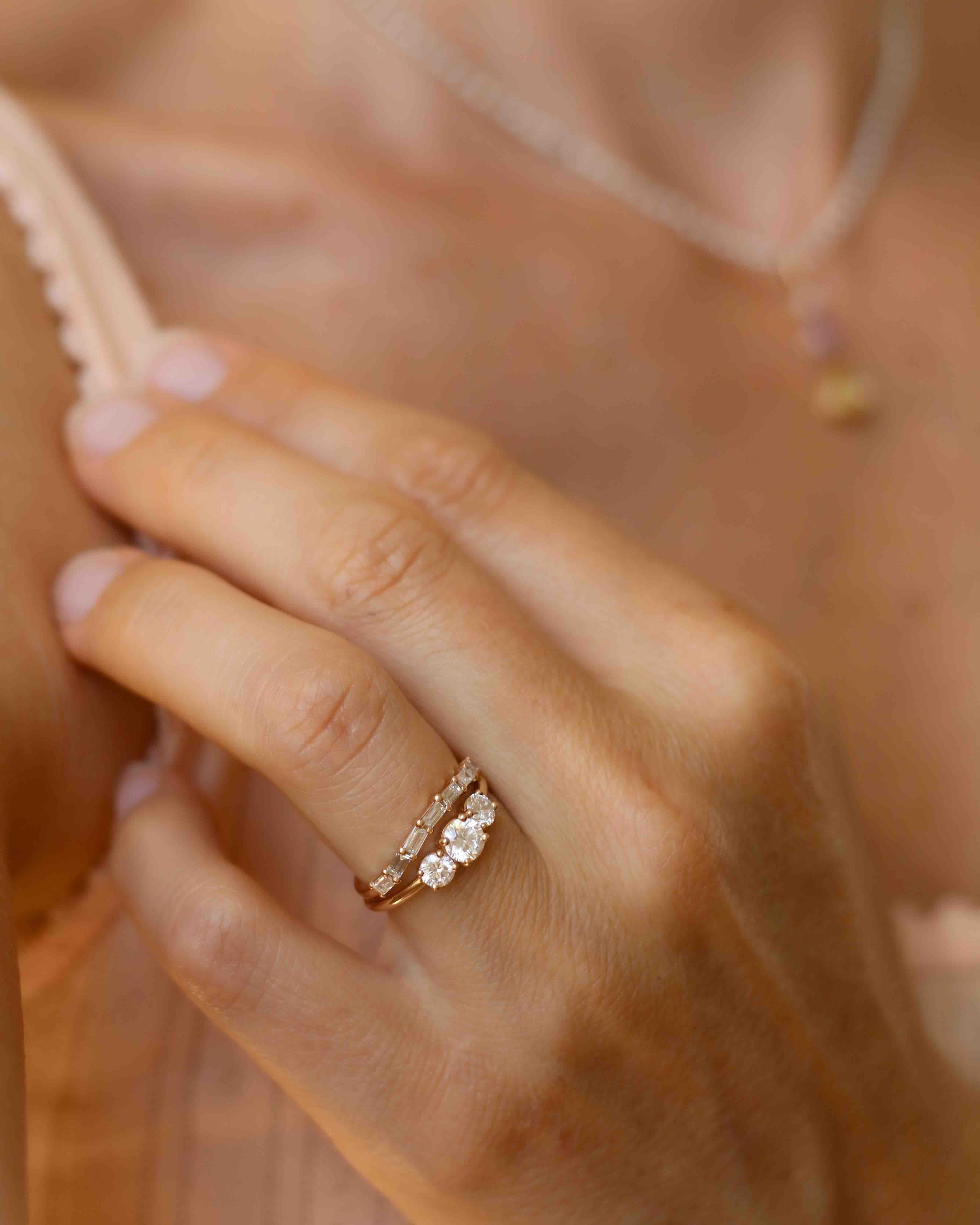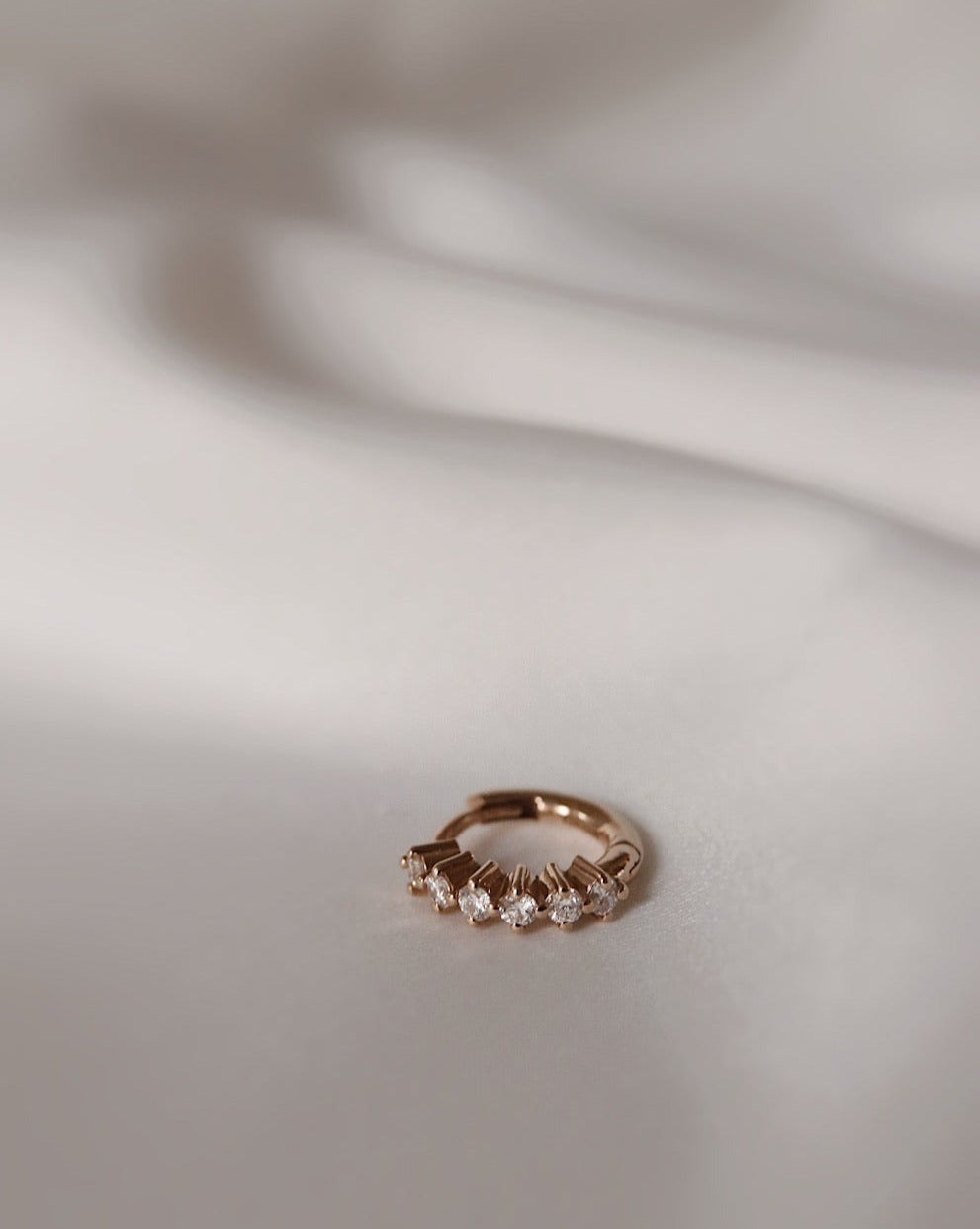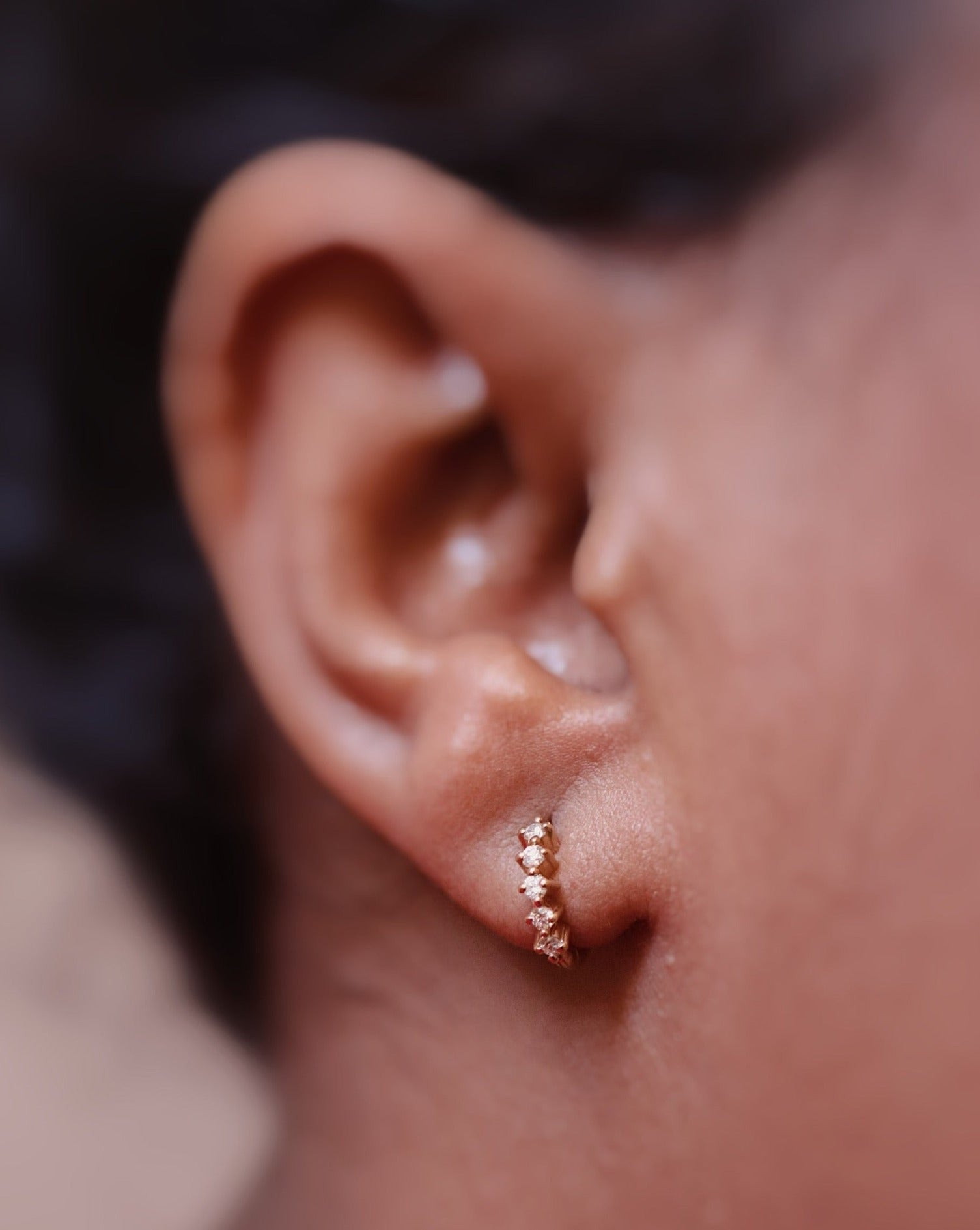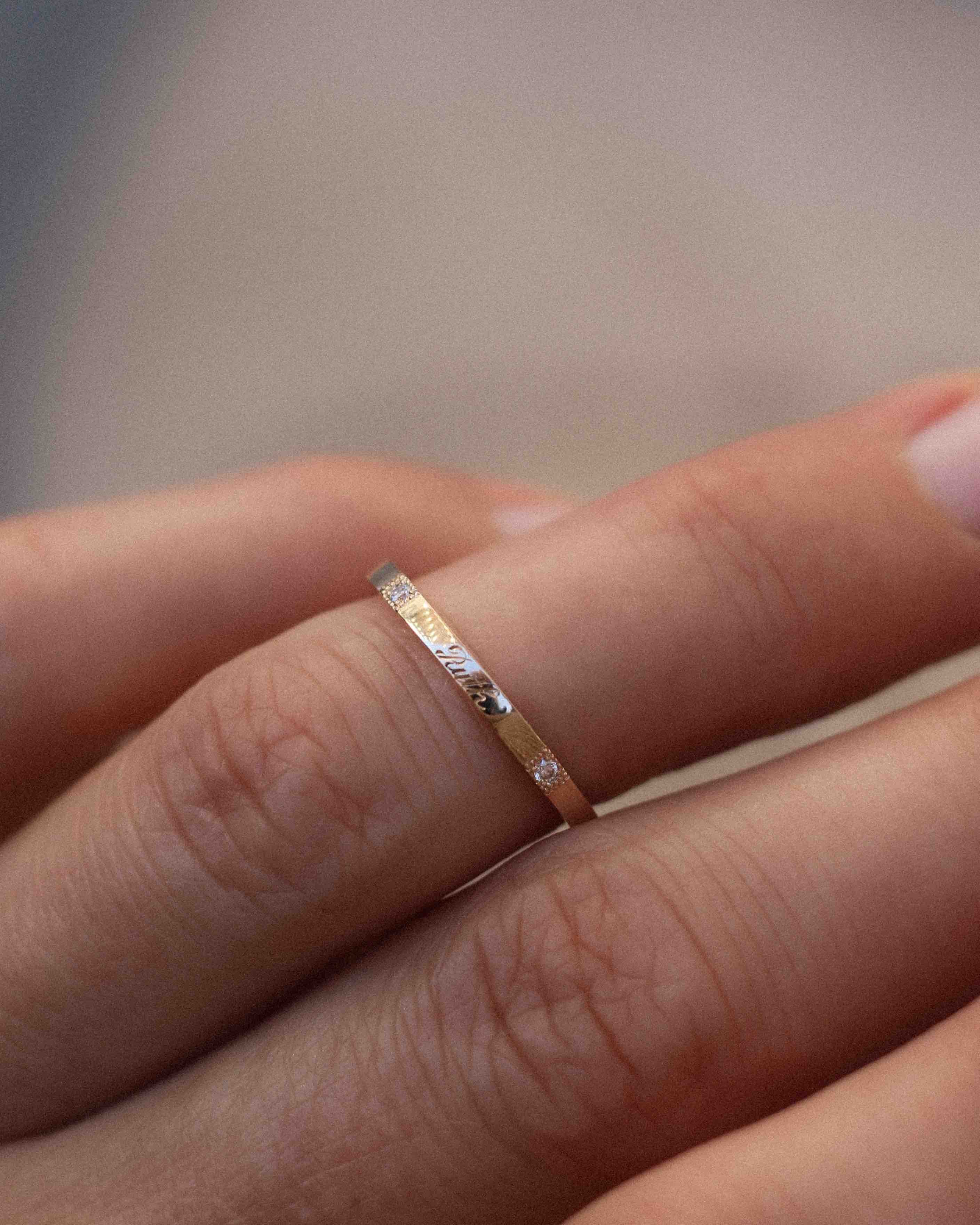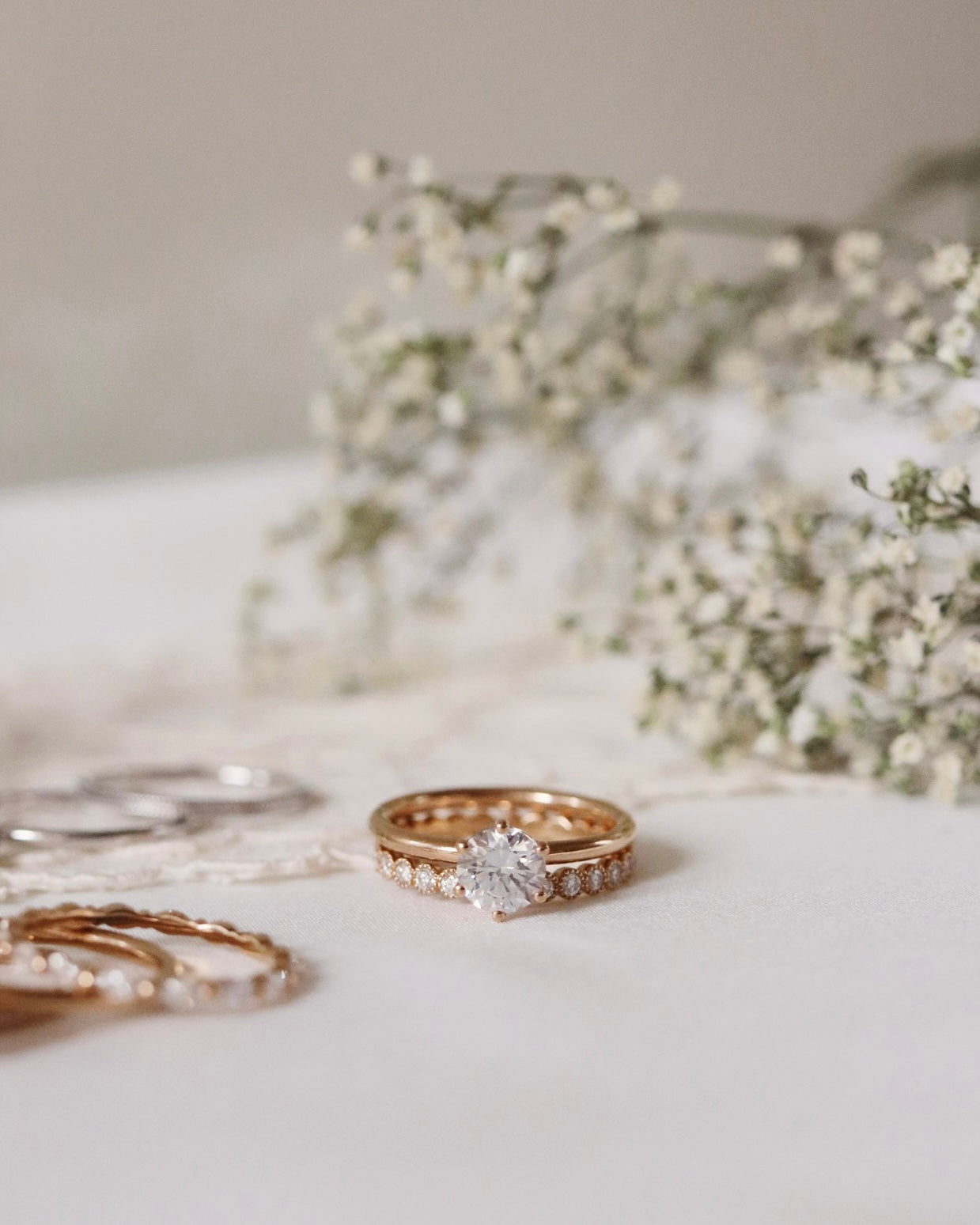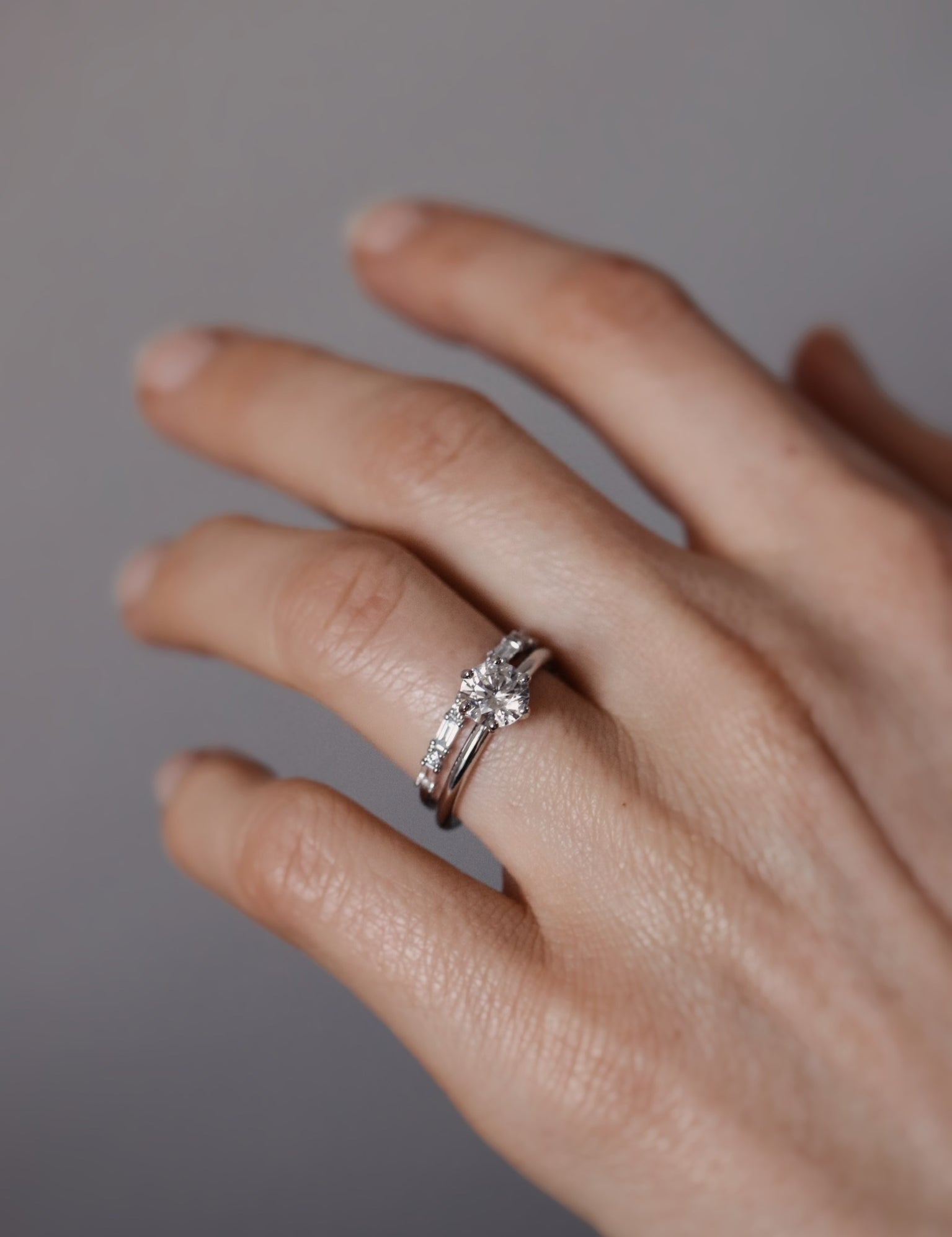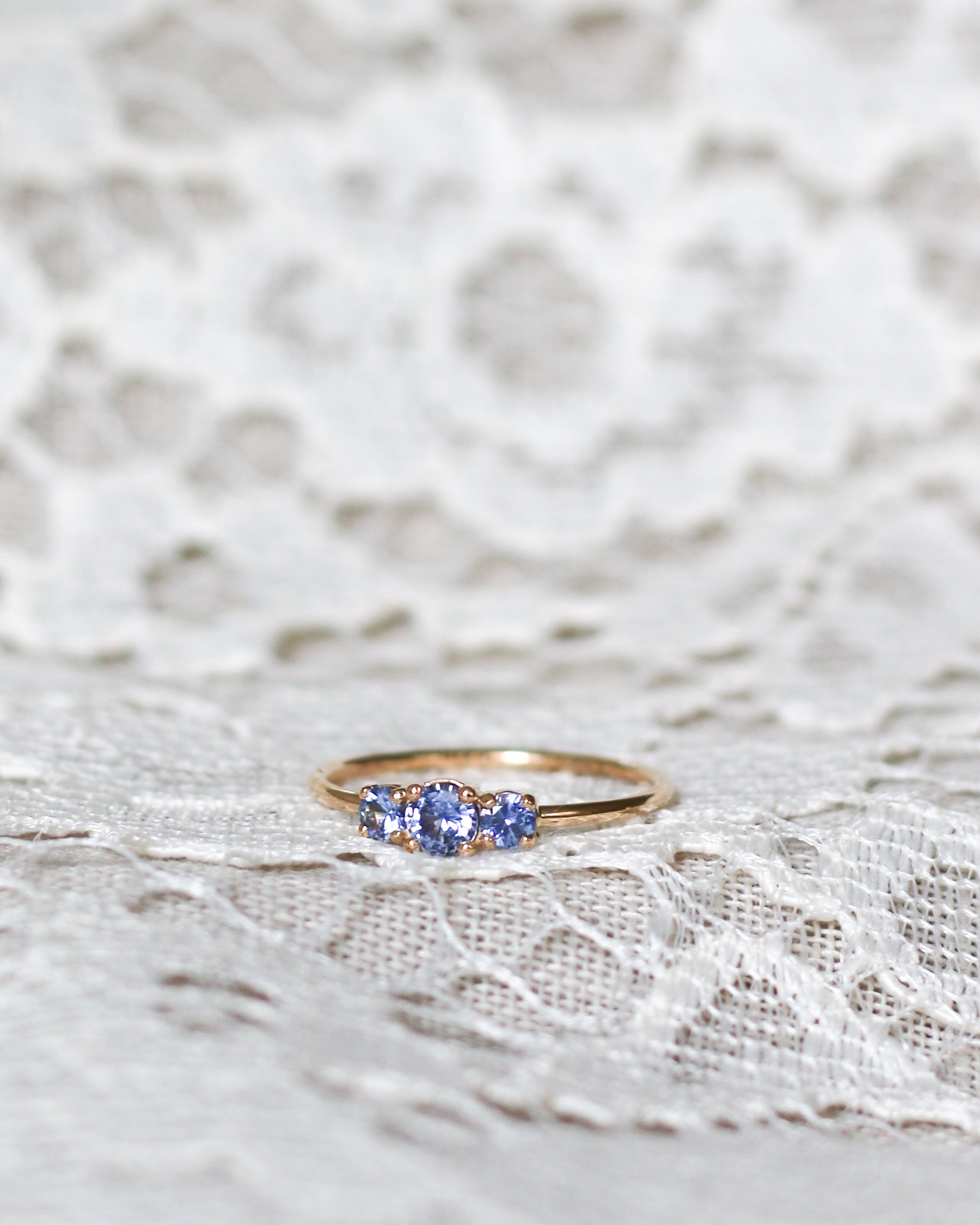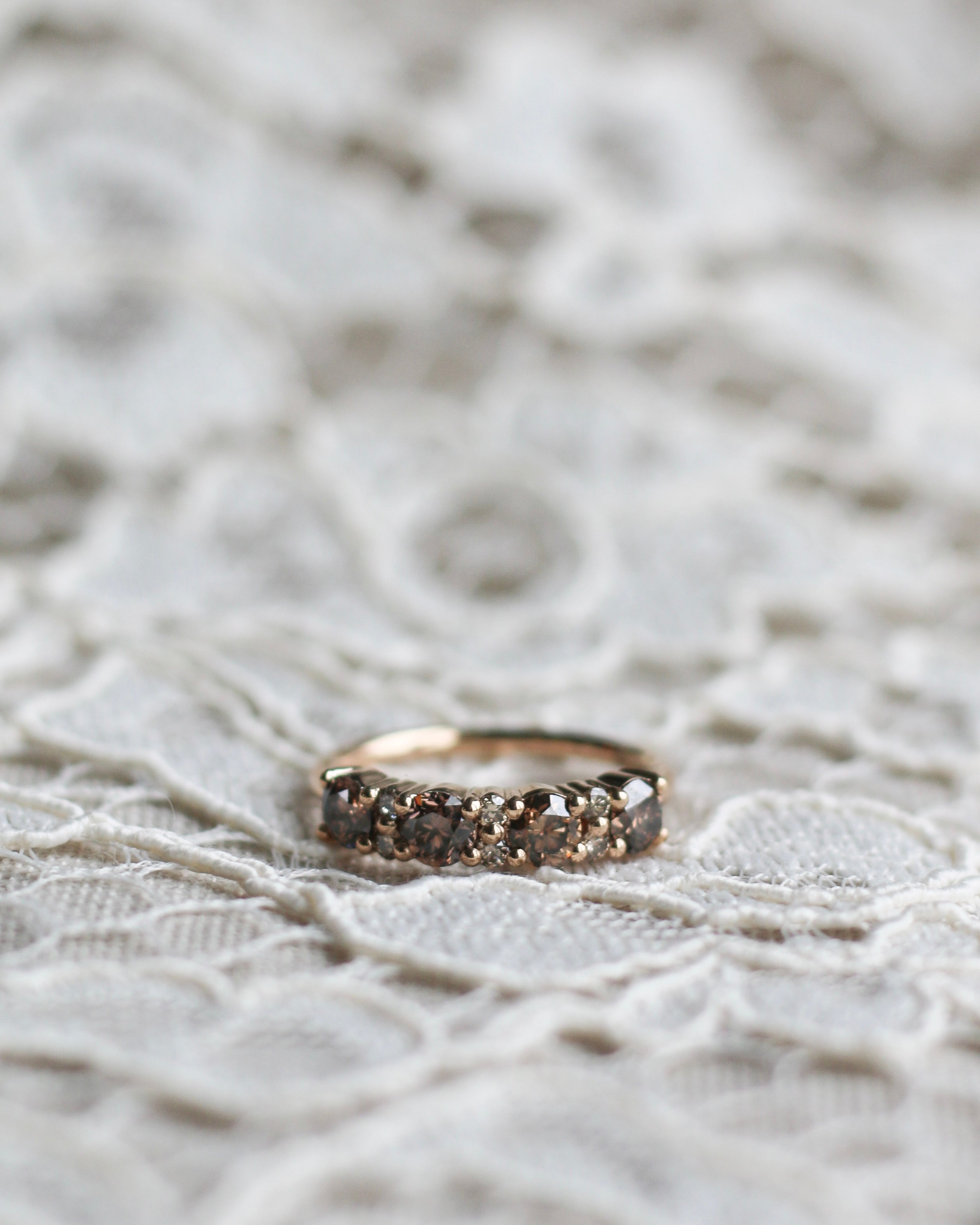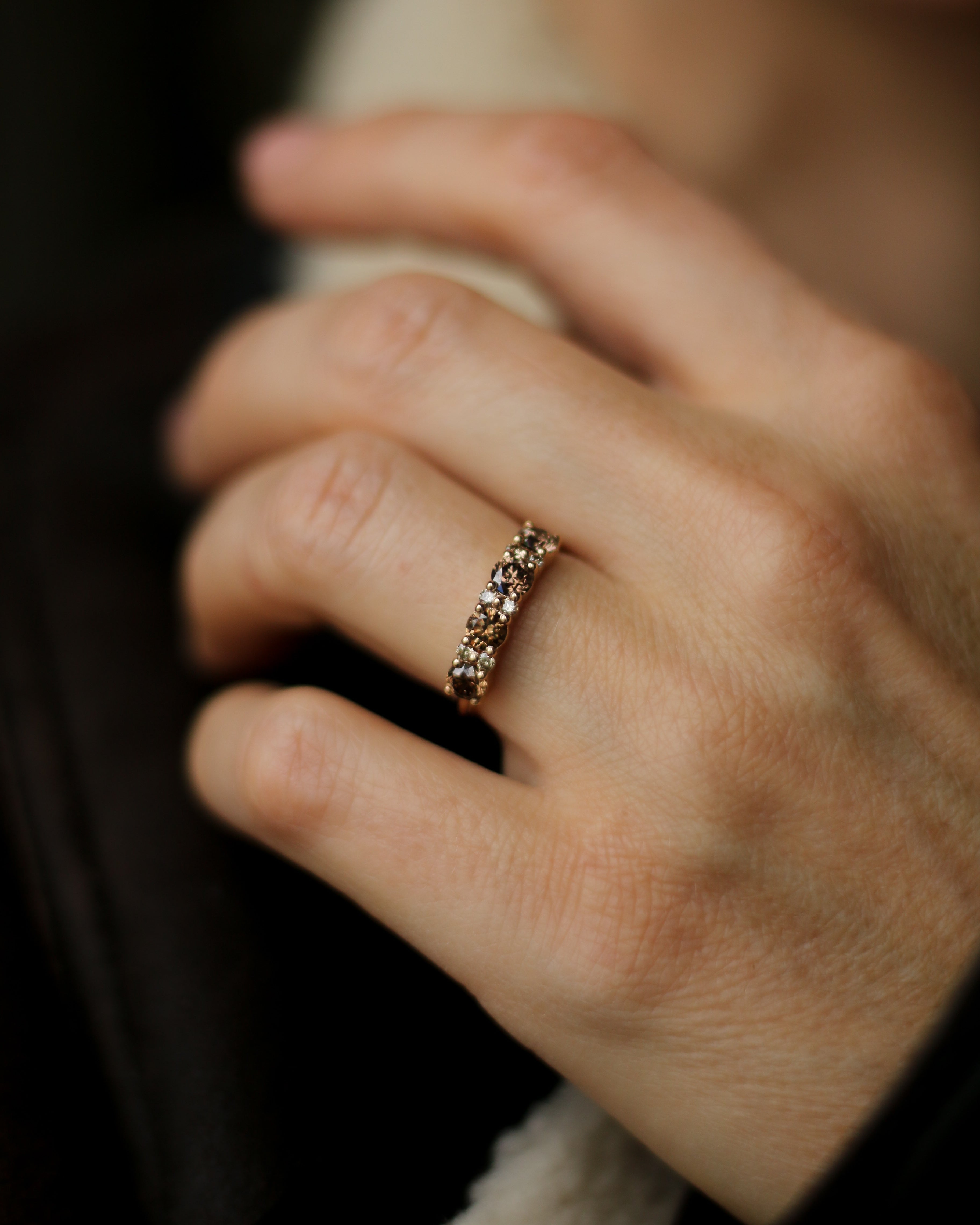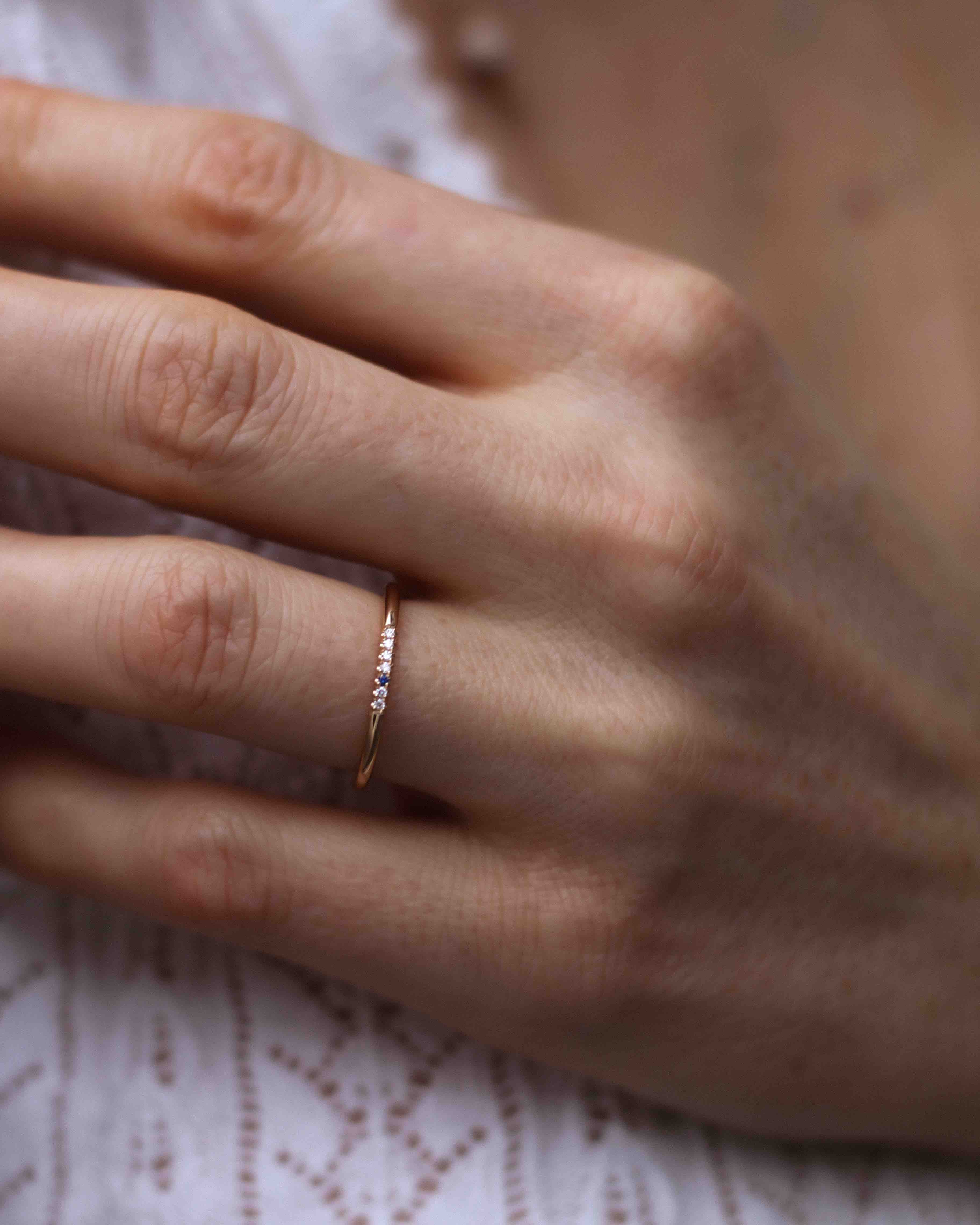Guide - the different colors of gold
What differentiates the various metals?
Yellow gold, white gold, rose gold - or platinum
You might have noticed that you can choose which gold color you want your jewelry made in: yellow gold, white gold or rose gold. You can also have your jewelry made in platinum!
But what actually differs between these metals?

Platinum
Platinum is an exclusive, white metal that began to be used shortly after the turn of the century in 1900.
Thanks to its hardness, you can create very delicate jewelry in platinum. You can tell by the tiaras of royalties whether they are made of silver or platinum: those made of platinum are often much more sheer than those made of silver!
Platinum has a very high melting point (1700C compared to gold which melts at 1064C), which makes it more challenging to work with. Therefore, jewelry in platinum generally has a higher price than jewelry in gold.
Care:
Platinum requires very little care, apart from regular washing and general service. The color remains unchanged from year to year.

Yellow gold
Yellow gold is the most common gold color in our jewelry.
It is rare today to use 24 karat gold, i.e. pure fine gold. In Sweden, as standard, we mix the fine gold with 25 percent other metals. Then it is called 18K gold.
18K gold is harder than 24K gold, which means it resists scratches and holds gems better.
Colour:
The 18K yellow gold alloy we use is the standard yellow gold colour used in jewelry made in Sweden, and is called "Svensk Mellanfärg". Many of our international customers perceive it as less intense yellow than the more custard yellow gold shade that is common in Southern Europe or in jewelry made in Asia.
It consists of 75.1% fine gold (au) - the rest is silver (ag), copper (cu) and zinc (zn). We have chosen it for its very beautiful, soft yellow shade that works well against all types of gemstones.
Care:
Yellow gold requires very little care, apart from regular washing and general service. The color remains unchanged from year to year.
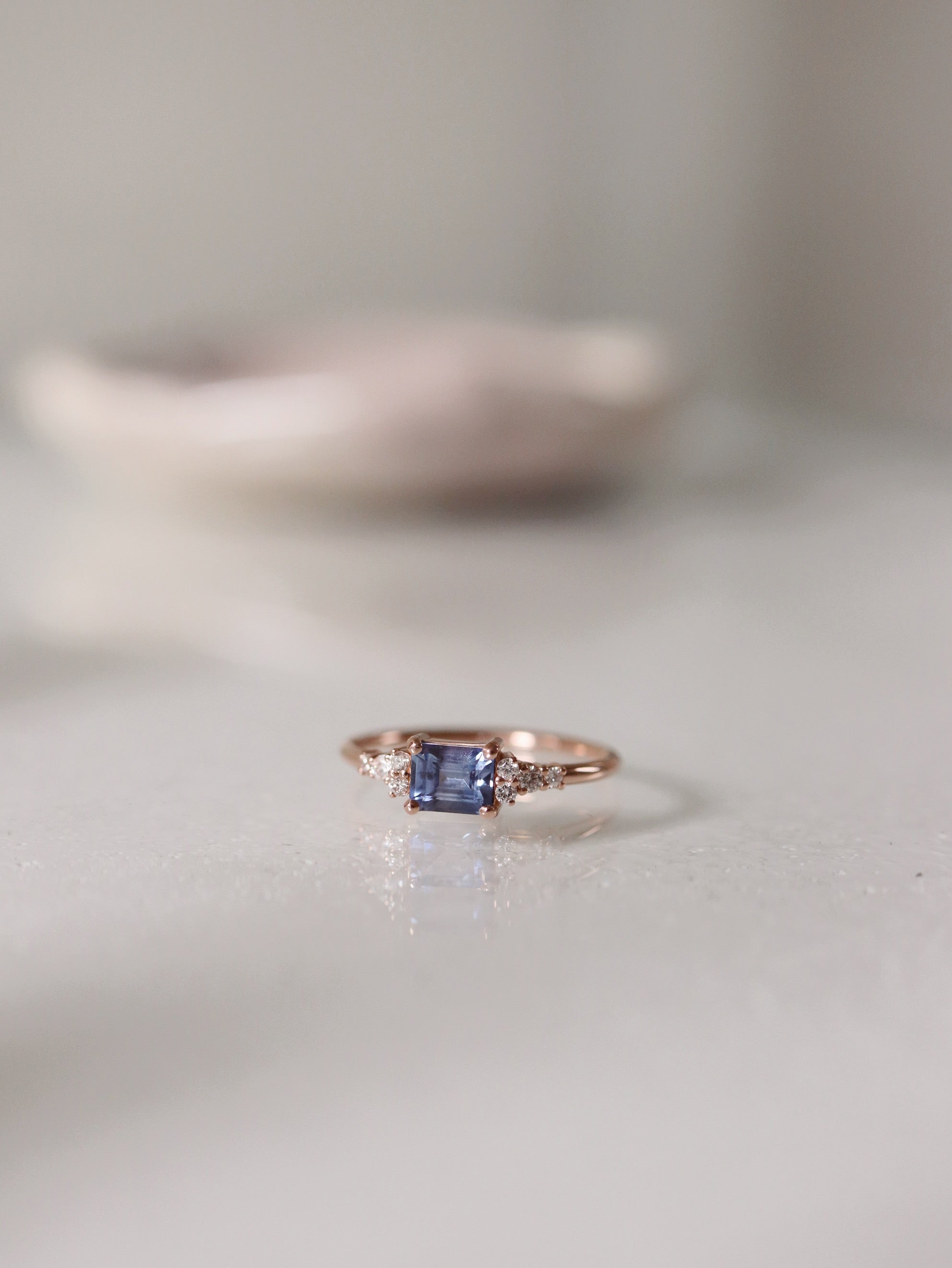
Rose gold
Rose gold is a shade that is still relatively uncommon in Sweden, but is very common in e.g. Southern Europe.
To bring out the warm, pink tone, a higher amount of copper and a smaller amount of silver and zinc have been used in the alloy compared to yellow gold.
Just like yellow gold, 18K rose gold contains three quarters of fine gold (au). This makes it harder than pure gold, which makes it resistant to scratches and holds gems better.
Color:
The 18K alloy we use consists of 75% fine gold (au), 23% copper (cu) - the rest is zinc (zn) and silver (ag).
Rose gold is absolutely wonderful to combine with green gemstones, champagne diamonds or like here - blue sapphires!
Care:
Rose gold requires very little care, apart from regular washing and general service. The color remains unchanged from year to year.
If you are sensitive to copper you should not wear rose gold!
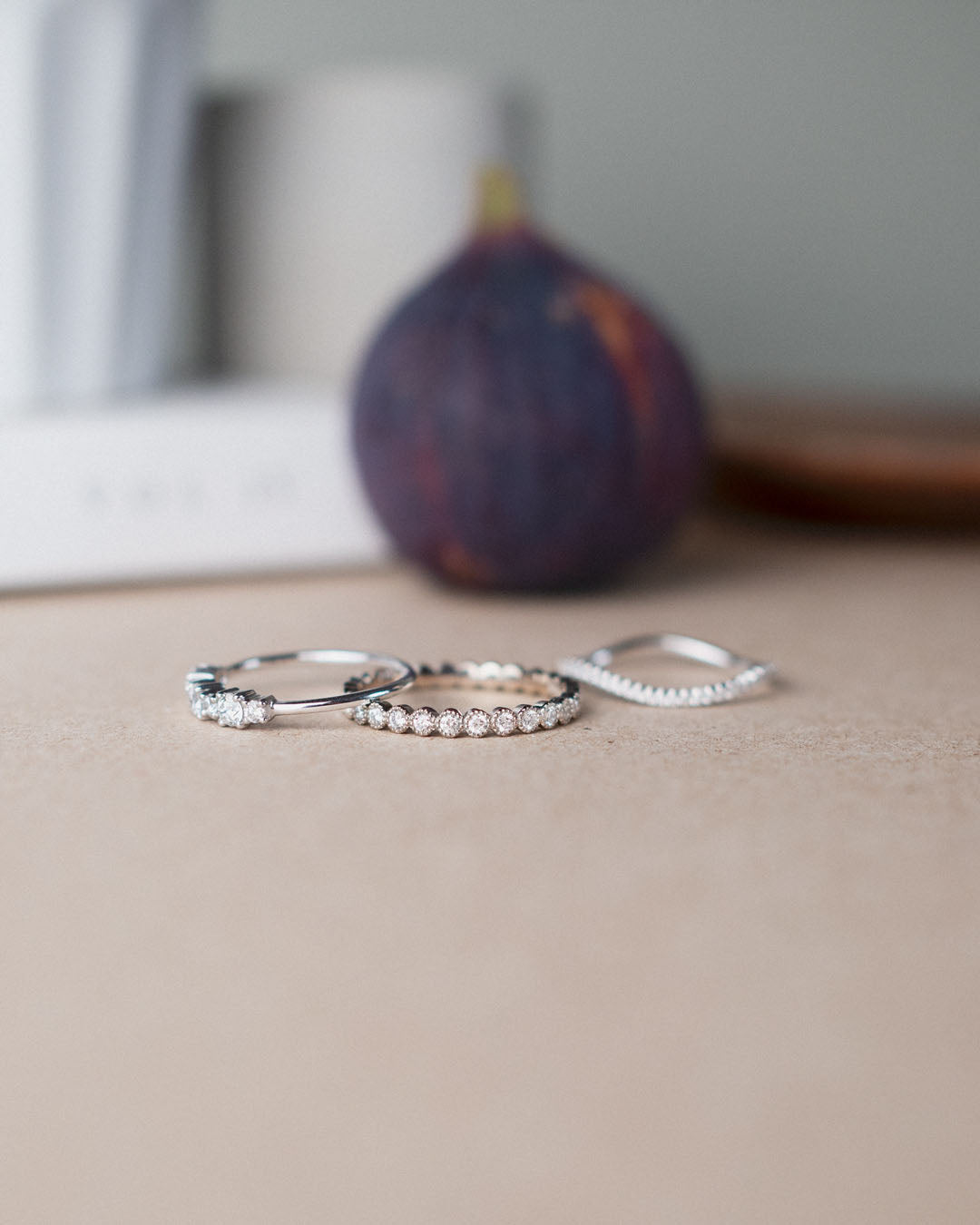
White gold
White gold hasn't been around that long - the alloy got traction as late is in the 1950s!
This is because the platinum was needed in the war and a replacement for the white metal in jewelry had to be found. Fine gold was then mixed with a larger proportion of white metals, and a light grey alloy was then obtained.
Just like yellow gold, 18K white gold contains three quarters of pure 24K gold. Thanks to white gold containing palladium, which is a very hard and durable metal, white gold becomes very hard. It is also more difficult for goldsmiths to work with, and is often higher in price than the same piece of jewelry in yellow or rose gold.
Color:
The 18K alloy we use consists of 75.1% fine gold (au), 16% palladium (pd) - the rest is zinc (zn) and copper (cu).
Care:
Since white gold is meant to imitate platinum, but in fact mostly contains pure gold, which is a yellow metal, it will not be completely white. Therefore, the finished white gold jewelry is plated with a thin layer of rhodium. Then it becomes crispy white! This plating wears away with use. To keep your white gold jewelry crisp white, you need to re-rhodium your jewelry about every two years, if you wear it often.
This means that white gold jewelry requires more maintenance than jewelry in yellow or rose gold.

